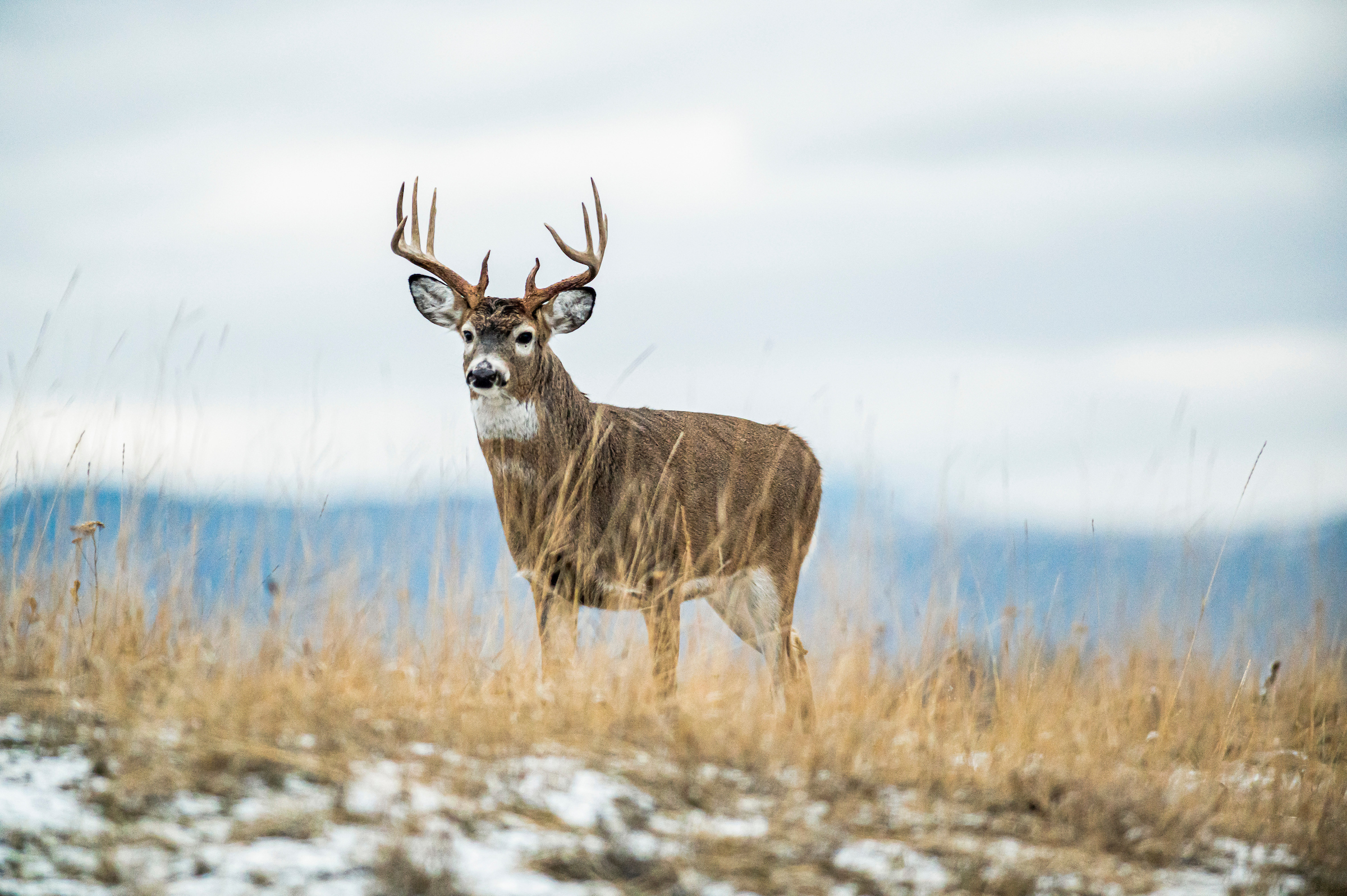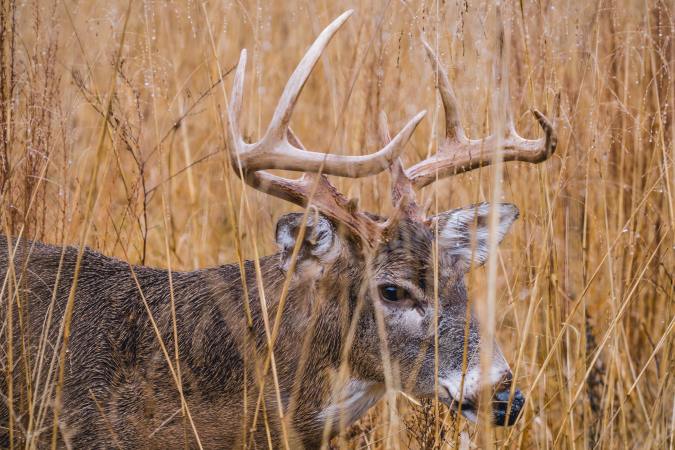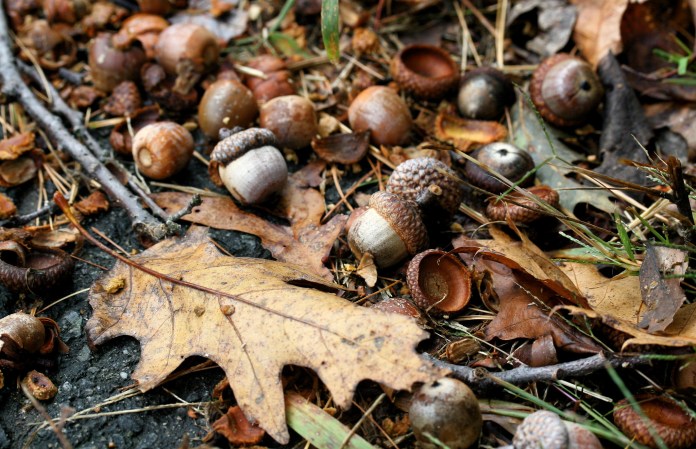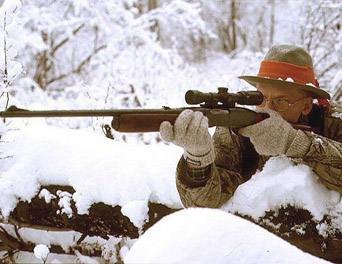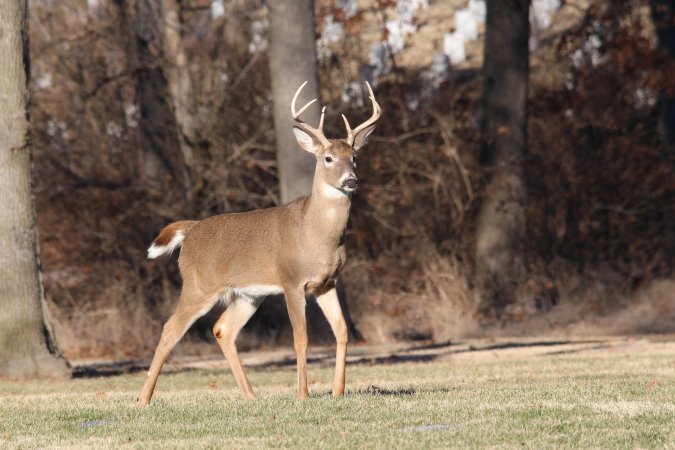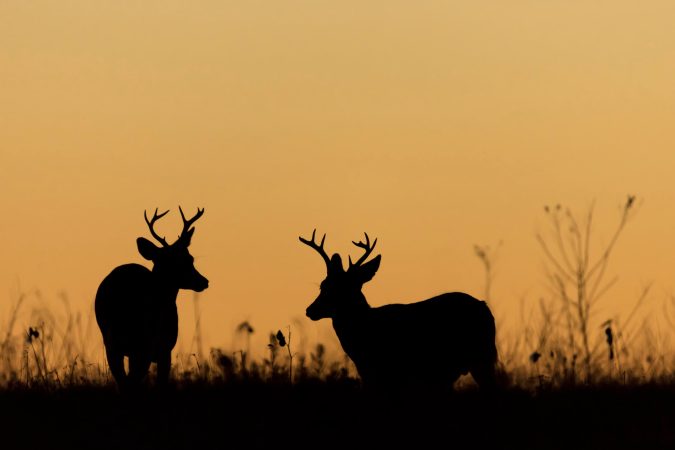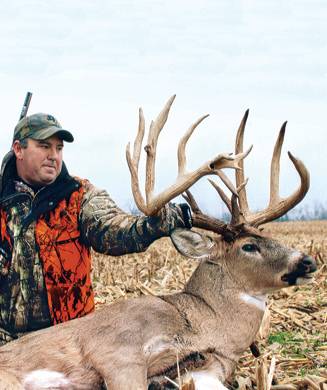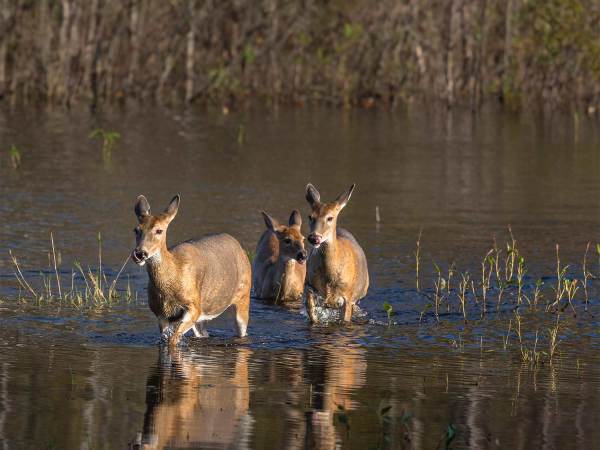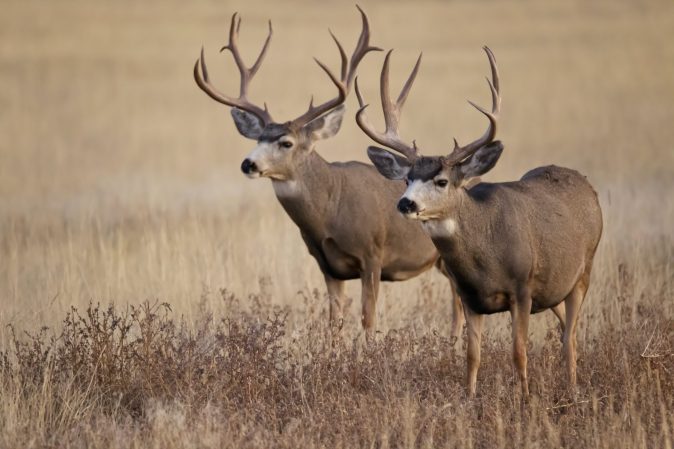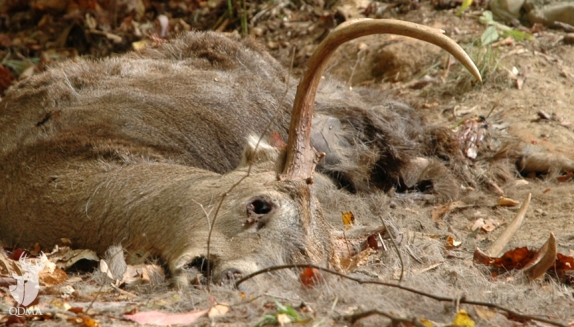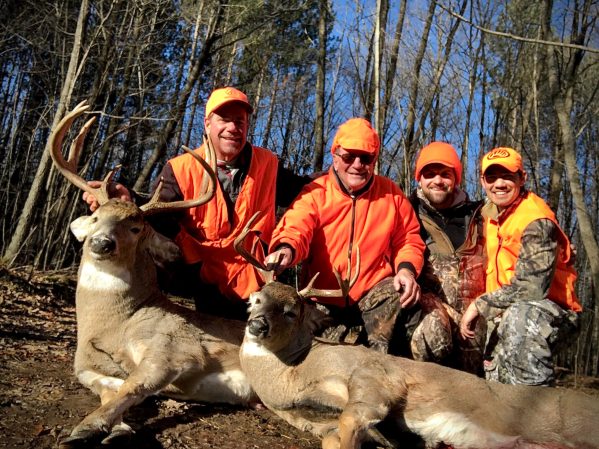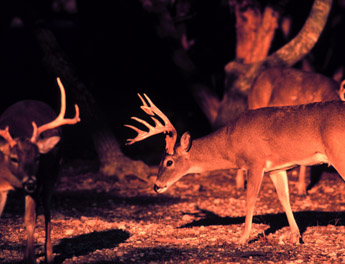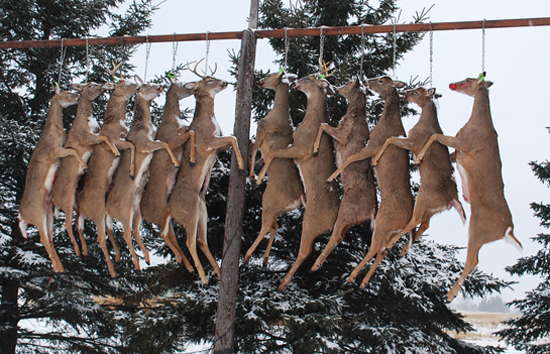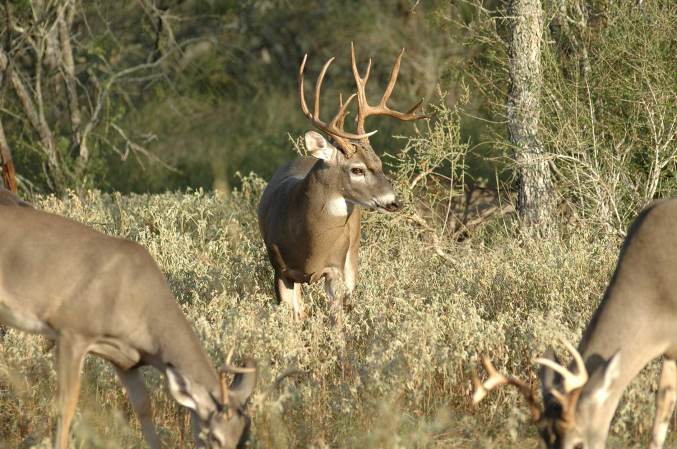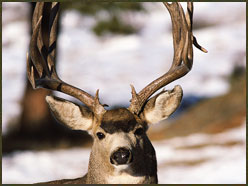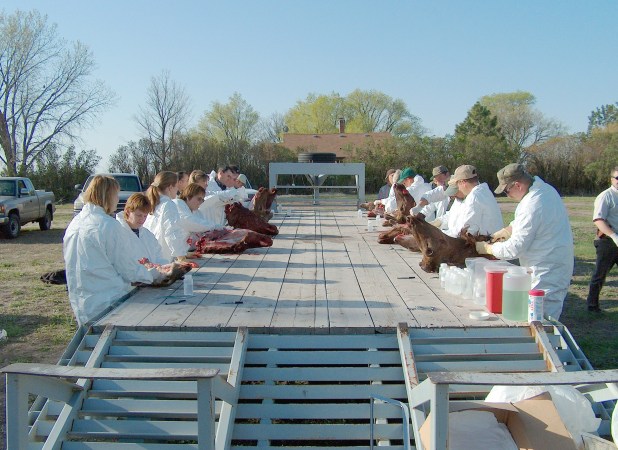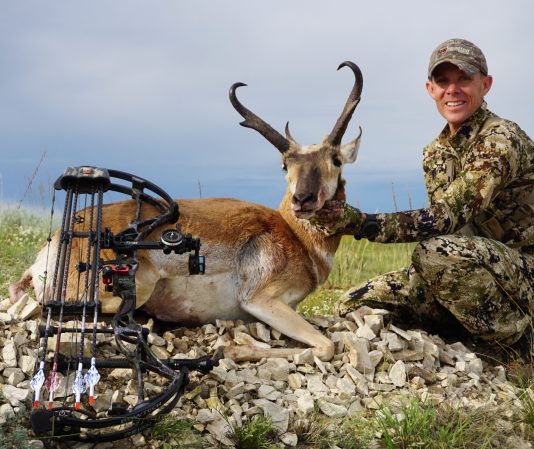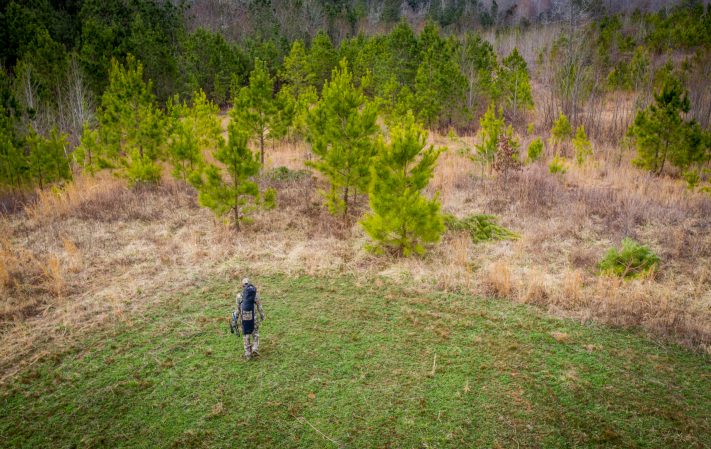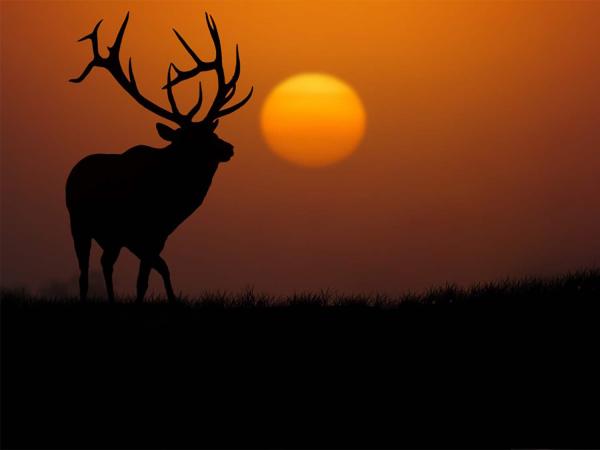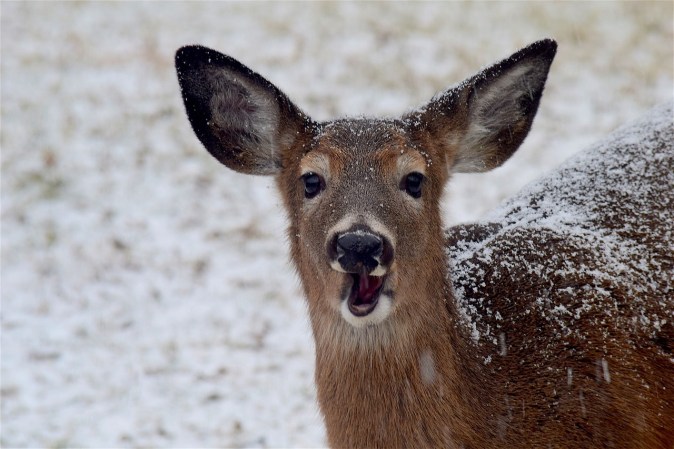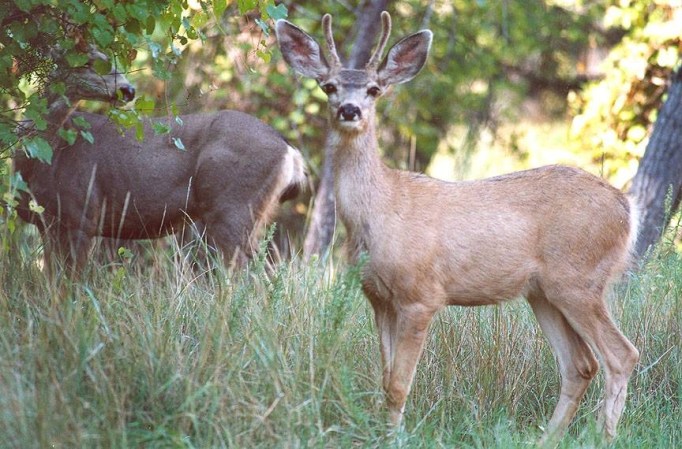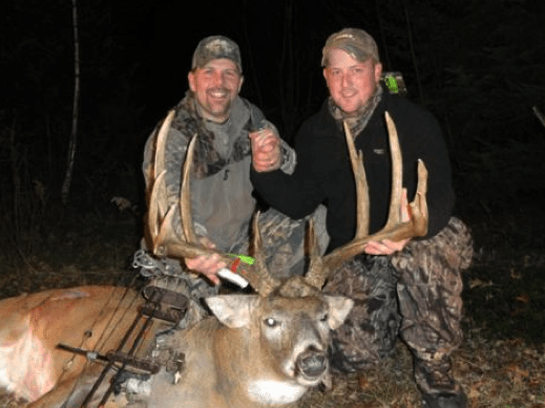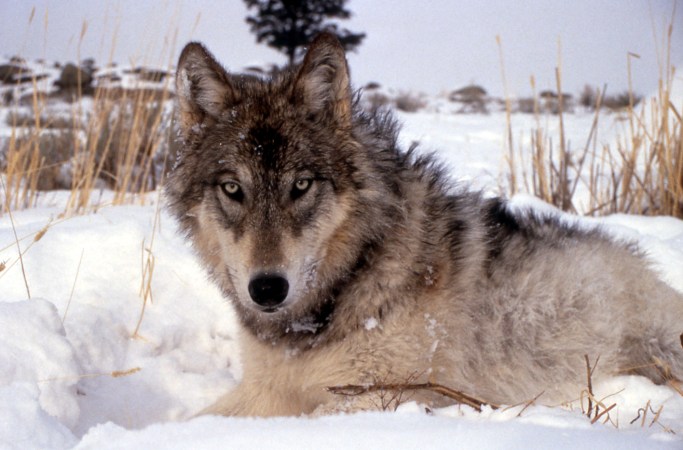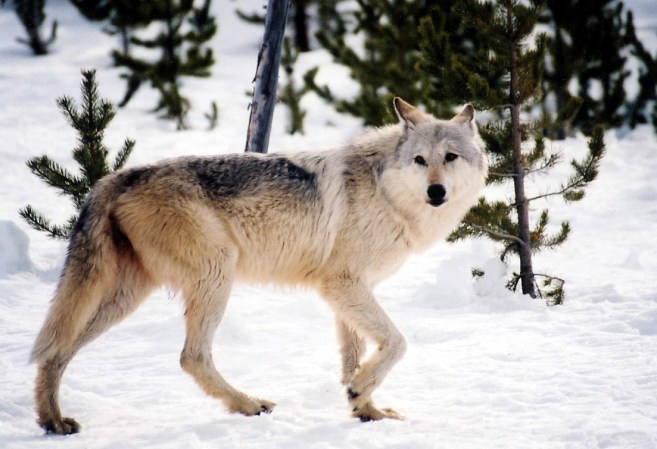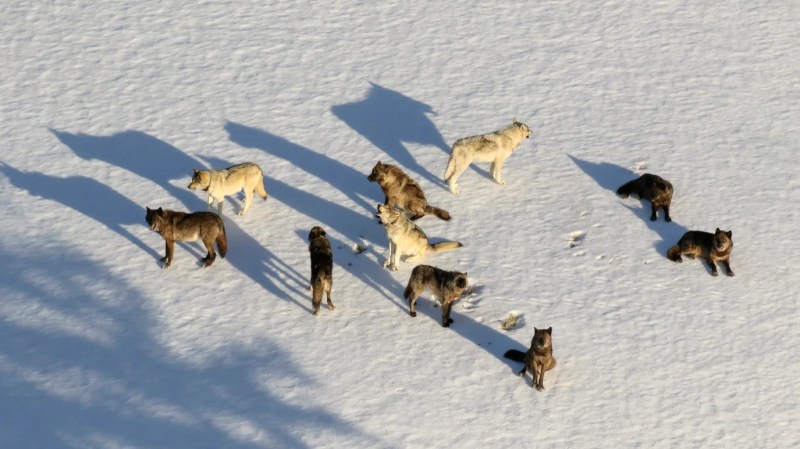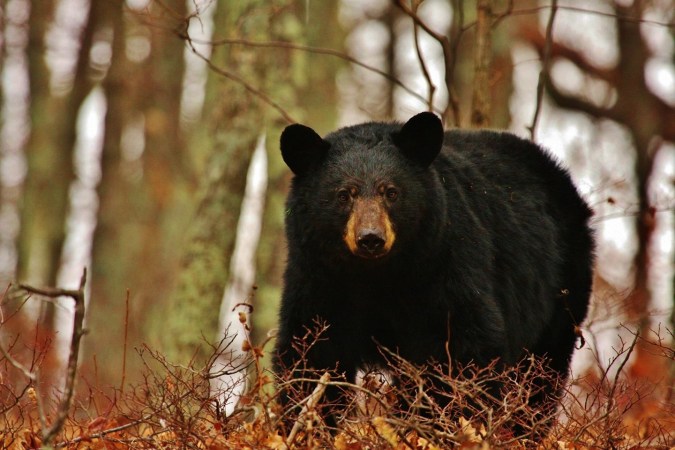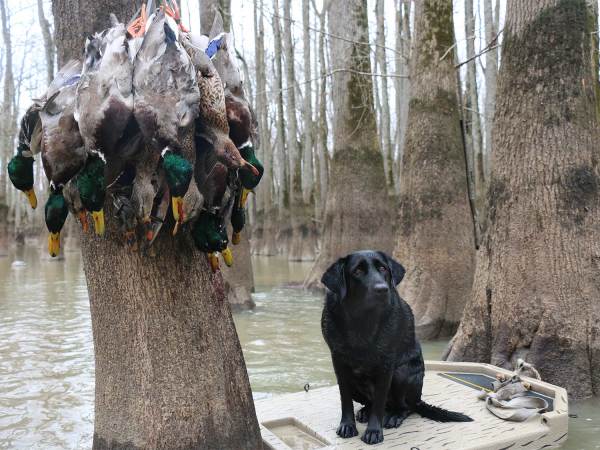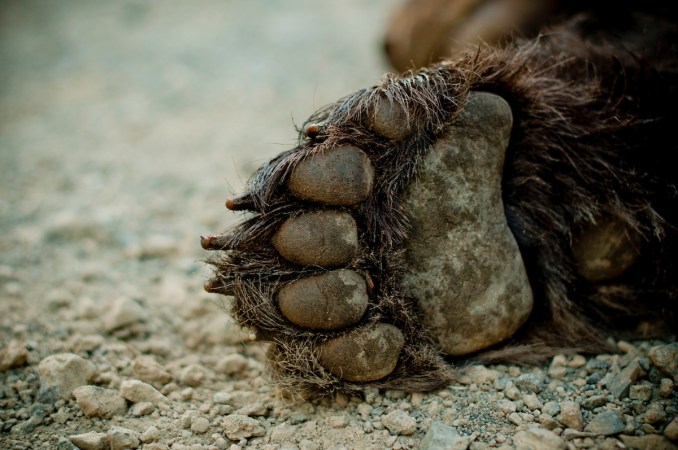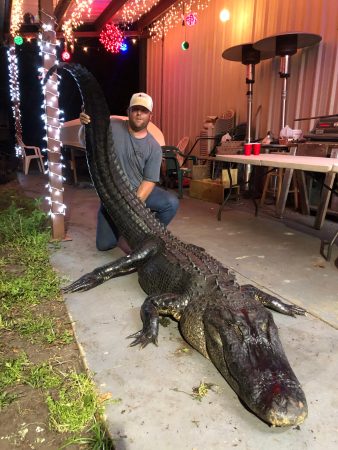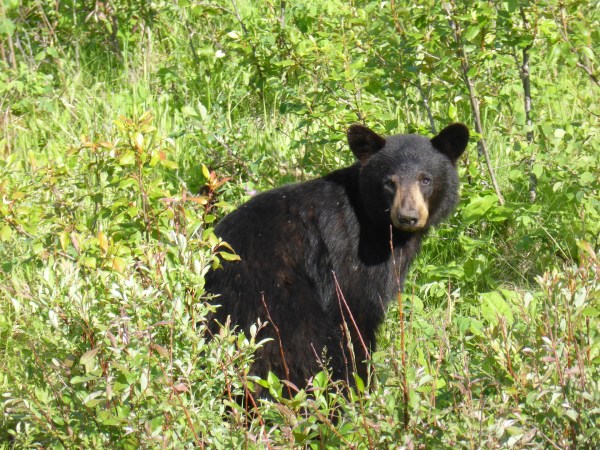Most hardcore deer hunters began planning for this deer hunting season the moment the last one ended. We went shed hunting, scouted new ground, tweaked trail camera placement, prepped new food plots, and fine-tuned our shooting at the bow range. And now, the 2022 season is almost here, but what will it hold?
It’s a mixed bag across deer country. Some Western states are struggling with severe drought conditions, wildfires, and declining mule deer herds. Some states in the Midwest and East are dealing with Chronic Wasting Disease and epizootic hemorrhagic disease. But in many other places, deer populations continue to climb, the overall harvest includes more mature bucks (and fewer yearlings), and there’s plenty of accessible land to hunt.
So check out these state-by-state reports to to get an idea of what the deer hunting season forecast is where you hunt. Click on your state here to cut to the chase.
Alabama, Alaska, Arizona, Arkansas, California, Colorado, Connecticut, Delaware, Florida, Georgia, Idaho, Illinois, Indiana, Iowa, Kansas, Kentucky, Louisiana, Maine, Maryland, Massachusetts, Michigan, Minnesota, Mississippi, Missouri, Montana, Nebraska, Nevada, New Hampshire, New Jersey, New Mexico, New York, North Carolina, North Dakota, Ohio, Oklahoma, Oregon, Pennsylvania, Rhode Island, South Carolina, South Dakota, Tennessee, Texas, Utah, Vermont, Virginia, Washington, West Virginia, Wisconsin, Wyoming
Alabama
Species: Whitetail
Estimated population: 1.25 million
Fall 2021-22 harvest: 186,417 reported through Game Check; total estimated harvest will be generated after summer phone surveys.
Overall outlook: Chris Cook, deer program coordinator for the Alabama Division of Wildlife and Freshwater Fisheries, said everything looks good for the 2022 season. Deer are abundant throughout the state, and the age structure of bucks in the annual harvest seems to be increasing.
Where to Hunt Deer in Alabama
Cook said northwestern Alabama is always a good bet, considering the quality and quantity of deer harvested there. Black Warrior WMA, in Lawrence County, offers the chance to kill a buck earlier — mid- to late-November — as deer there rut earlier than in other areas of the state. Alabama’s southernmost counties are also worth a look, Cook said. Barbour Wildlife Management Area, in Barbour and Bullock counties, covers more than 29,000 acres, and offers good opportunities for mature bucks in January, before and during the peak of breeding.
Cook said hunters should check out Alabama’s Deer Rut Map at outdooralabama.com to help plan hunting efforts. Hunters willing to travel can hunt the rut on Alabama’s WMAs from mid-November through early February. Find season dates and bag limits here.
Alaska
Species: Sitka black-tailed deer; some mule deer have been sighted from the eastern interior to northern southeastern Alaska.
Estimated population: Not available. Blacktail populations fluctuate considerably based on winter severity.
Fall 2021-22 harvest: 17,678
Overall outlook: “The deer forecast for the Kodiak Archipelago for the upcoming season looks decent,” said Nathan Svoboda, area wildlife biologist with the Alaska Department of Fish and Game, Kodiak Island. “We did not observe any major mortality events last winter, and although some areas of the island are still recovering from the winter of 2019, the population overall has recovered well, and we anticipate a good quality deer hunt this fall.”
Charlotte Westing, Prince William Sound area wildlife biologist for the Alaska Department of Fish and Game, said 2022 pellet surveys there indicate medium deer densities. The population might have declined somewhat from 2021, but not catastrophically.
Where to Hunt Deer in Alaska
Unit 4Z saw the highest blacktail harvest in 2021, with 6,579 animals. 8Z on Kodiak Island was second with 4,797. Most of Kodiak Island is public (Kodiak National Wildlife Refuge) and accessible by plane or boat.
“Be bear aware at all times, and never drag your game,” Svoboda said. Find season dates and bag limits here.
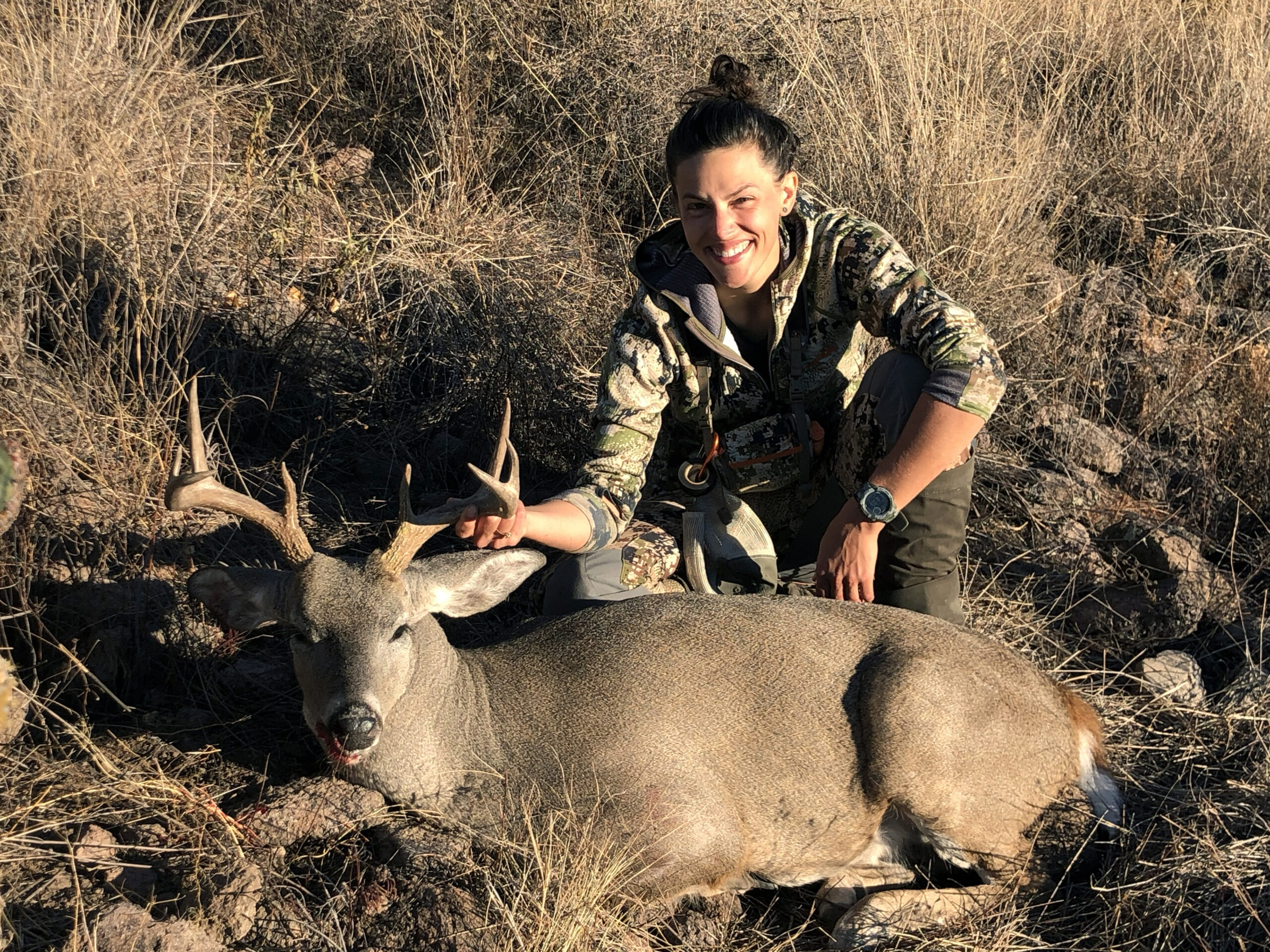
Arizona
Species: Mule deer and Coues deer
Estimated population: 95,000 Coues, 105,000 mule deer
Fall 2021-22 harvest: Estimated 7,379 Coues bucks; estimated 6,869 mule deer
Overall outlook: Dustin Darveau, terrestrial wildlife specialist with the Arizona Game and Fish Department’s Game Program, said Arizona is still experiencing the effects of long-term drought throughout most of the state, so fawn recruitment and general overall nutrition have decreased. The state has endured large-scale wildfires the past several years. Some of those will benefit wildlife as vegetation recovers, if timely rains follow and don’t cause major flooding events. Other areas have experienced high burn severity and will take much longer to recover.
Where to Hunt Deer in Arizona
Darveau said the northern and eastern regions of Arizona have remained fairly stable, although it can be difficult to receive tags for those areas during the draw. Coues deer are most common in Arizona’s southeastern mountains. Game management units 12A/12B and 13A/13B in the northern part of the state have reputations for producing mature mule deer. Arizona has about 9.6 million acres of state land and 30.3 million acres of federal land.
“With low densities of deer throughout much of the state, one of the most important skills to hunt deer in Arizona is to develop solid glassing skills with the best optics you can afford,” Darveau said. “Understanding the habitat needs of the species of interest is also highly beneficial. Several resources can be found on the department’s website.” Find season dates and bag limits here.
Arkansas
Species: Whitetail
Estimated population: 900,000 to 1 million
Fall 2021-22 harvest: 181,064
Overall outlook: “The population is stable overall, even though the 2021-22 deer season harvest was a 13-year low,” said Ralph Meeker, deer program coordinator for the Arkansas Game and Fish Commission. “However, the 2020-21 season set the all-time record deer harvest for Arkansas, at 216,835. The percentage of older bucks harvested still remains high, with greater than 65 percent of bucks harvested being 3.5 years old or older.”
Where to Hunt Deer in Arkansas
The Ozark Mountains, in northern Arkansas are always promising. Good public areas there include the sprawling Ozark National Forest (about 1.16 million acres) and Wedington WMA, which covers almost 16,000 acres in Benton County. The Mississippi Alluvial Valley, which covers much of eastern Arkansas, is also good. Public areas there include Henry Gray Hurricane Lake WMA, which consists of about 17,000 acres of prime bottomland hardwoods in White County, and Freddie Black Choctaw Island WMA, which covers about 7,580 acres in Desha County.
“Deer movement and subsequent deer harvest is highly dependent on the availability of hard mast,” Meeker said. “Finding good food sources in close proximity to cover and travel corridors is important.” Find season dates and bag limits here .
California
Species: mule deer and Columbian black-tailed deer (northern coastal region)
Estimated population: 450,000 to 500,000 (all deer)
Fall 2021-22 harvest: 31,986
Overall outlook: Julie Garcia, with the California Department of Fish and Wildlife’s Deer Management Program, said that although deer herds experience annual increases and declines across the state, the overall population trends remain stable. She added that 2022 could be a challenge for hunters because of continuing drought conditions, and current and expected future wildfires in many premium zones.
Where to Hunt Deer in California
Garcia said the zones B1 through B6, which essentially cover the far northwestern corner of California, look promising. According to Hunting Deer in California, written by John Higley much of the northwestern region can be classified as part of the Coastal Rain Forest Province.
“This is a lush, forested area with redwoods, Douglas fir, mixed evergreens and oaks toward the interior,” he wrote. “Timber blankets the slopes of interior mountains, eventually giving way to rugged, rocky alpine ridges in higher elevations. Black-tailed deer reign supreme throughout this part of the state, which extends roughly from the brushy foothills near Interstate 5 west to the Pacific Ocean.”
Depending on where you are in the B zones, you can hunt wilderness areas, accessible national forest lands — including the Mendocino, Six Rivers, Klamath and Shasta-Trinity National Forests.
“Keep your hunting spots flexible this year, and visit the U.S. Forest Service and Bureau of Land Management websites for land access closures due to wildfire in your hunt area,” Garcia said. Find season dates and bag limits here.
Colorado
Species: mule deer and whitetail deer
Estimated population: 416,426 total deer
Fall 2021-22 harvest: 40,561 total deer
Overall outlook: Bradley Gabrielski, Colorado Parks and Wildlife communications center wildlife coordinator, said prospects for 2022 look good. Deer populations in many regions have increased to objectives or even exceeded them in some areas. Several external factors could influence that, but with strict regulations on license quotas and biological research, the state can help keep populations flourishing.
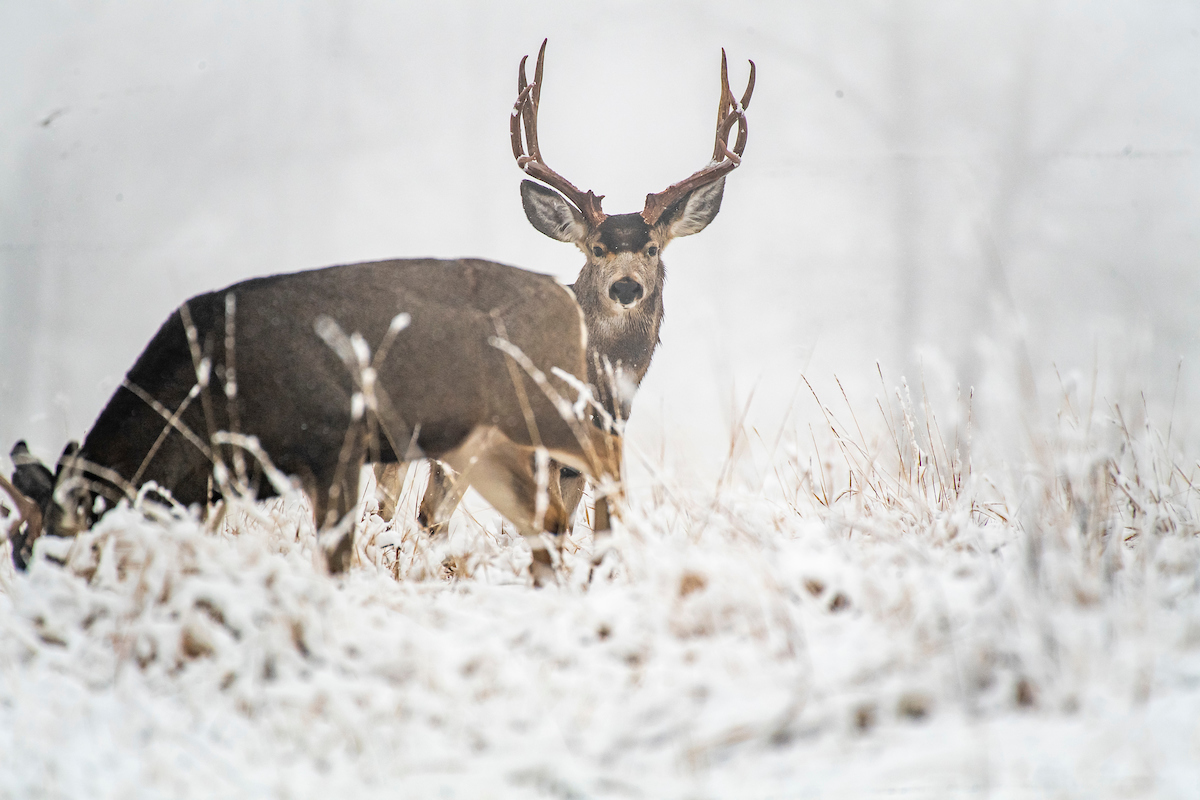
Where to Hunt Deer in Colorado
Gabrielski said the Lower Yampa Region in northwestern Colorado has a large deer population — about 75,120 — across a vast area. Mountain shrubs and pinyon junipers provide strong habitat for deer and relatively easier navigation because of the high alpine plains environment, which isn’t as filled with heavy, dark timber. Mountain shrub and pinyon-juniper breaks will hold the most deer. Focus points along the southern portions of the region include the Danforth Hills for early rifle seasons and the Axial Basin and adjacent Bureau of Land Management land for later seasons.
The Middle Park Region, in north-central Colorado, is another promising area. It has a deer population estimate of 16,670, which is currently higher than the objective.
“This area had a large amount of mountain pine beetle infestation, which has caused downed timber throughout, but enough time has passed that fresh vegetation has (taken) hold and provided proper habitat and food sources for the deer in the area,” Gabrielski said. “The buck-to-doe ratio in Middle Park has stayed relatively steady with 40 bucks to 100 does. Hunters would want to focus on transition zones that have aspen, shrub and coniferous cover in this region to find some of the best opportunities. The proximity of this region to the Front Range and some of the larger human populations in the state does cause some heavy hunting pressure in areas, but there is still plenty of terrain that’s suitable for hunting. Deer will tend to move west and down in elevation over the seasons throughout this range.”
“Weather is crucial,” Gabrielski said. “Many of our big-game hunting opportunities will take place in the fall and winter months. The volatility of the weather during that time will have a profound influence on where the animals are going to be. Strong sustained periods of snow can push animals deeper into valleys, while warmer weather can keep them in heavy dark timber at higher elevations. Preparing for inclement weather, as well as understanding how to navigate this terrain, can be essential when dealing with the elements.” Find season dates and bag limits here.
Connecticut
Species: Whitetail
Estimated population: 115,000
Fall 2021-22 harvest: 8,971
Overall outlook: Andrew LaBonte, wildlife biologist with the Connecticut Department of Energy and Environmental Protection, said the state’s overall harvest has declined because of decreasing firearms permit issuance and poor weather the past few years. Early drought conditions in 2022 could further affect the population and harvest opportunities, as epizootic hemorrhagic disease is possible on more of a widespread scale than previously if conditions persist. For the past three years, yearling bucks comprised only 34 percent of the firearms harvest, which indicates very low hunting pressure.
“Eight-point bucks have remained the most frequent point category the past four years,” he said.
Where to Hunt Deer in Connecticut
LaBonte said Fairfield County (DMZ 11), in southwestern Connecticut, and the Connecticut shoreline (DMZ 12), on the southern coast, have been the best places to hunt for the past 20 years. The area has had the highest deer densities and most liberal hunting seasons, allowing the use bait, letting hunters obtain replacement tags and featuring an extended January archery season. However, gaining access to private land there can be difficult, and deer populations are not as high as in previous years.
In 2021, 25 public areas exceeded harvests of 10 deer per square mile. Some of those properties are very small, but others are larger. Many are bowhunting-only properties and can be found in Connecticut Deer Program Summary, which comes out in mid-August and can be found at the CT DEEP website. Find season dates and bag limits here.
Delaware
Species: Whitetail
Estimated population: 31,071 (post-2021 season)
Fall 2021-22 harvest: 15,383
Overall outlook: Sam Millman, deer biologist with the Delaware Department of Natural Resources and Environmental Control, said harvest totals for the state’s archery, muzzleloader, and shotgun seasons continue to increase. Because of COVID-19 concerns, biologists have not collected data on the herd’s age and sex ratios.
Where to Hunt Deer in Delaware
Millman saidSussex County, the southernmost Delaware county, is the state’s deer hunting hotspot, with 8,622 harvested in 2021. However, the C and D Canal Conservation Area in New Castle County to the north had the highest deer harvest of any public Delaware wildlife area. Zone 11, which encompasses Old Furnace Wildlife Area, has the highest harvest of the state’s 18 wildlife management zones.
“When you think you’ve walked far enough to set up your hunting site, go deeper and farther,” Millman said. “I’ve seen a lot of hunters edge-hunt deer habitats. If you are looking for that special trophy buck, don’t expect him to walk out of his home too often. If you want a shot at the big buck, you’ll have to hike into the center of his home to find him.” Find season dates and bag limits here.
Florida
Species: Whitetail
Estimated population: no estimate
Fall 2021-22 harvest: 74,098
Overall outlook: “Though there are fluctuations at local levels, the statewide population is stable,” said Cory Morea, deer management program coordinator with the Florida Fish and Wildlife Commission. “Data about the impact of … deer antler-point regulations suggest progress is being made in an area important to most deer hunters: more opportunities to see and harvest mature antlered deer.”
Morea said information from more than 40 wildlife management areas indicated a 23 percent decrease in the harvest of 1.5-year-old bucks since antler-point restrictions took effect in 2014 and 2015. During that period, the average number of antler points increased 22 percent, from 4.9 to 6.0. Statewide, the average number of points increased to 6.7. Also, the antler index, which expresses antler quality, increased 20 percent.
Where to Hunt Deer Hunt in Florida
Areas in northern and central Florida typically maintain higher-quality deer habitat.The Tate’s Hell-St. James Island Unit, an 8,182-acre property in Franklin County, in northwestern Florida, has been added to the state’s 6-million-acre WMA system, and the FWC, in cooperation with the Florida Forest Service, is offering quota permit deer hunting there. Three Lakes WMA, in Osceola County near Lake Kissimmee, covers about 62,000 acres and is also a popular destination. Use FWC’s WMA Finder tool to search for WMAs by location, season, species and type of hunt. Find season dates and bag limits here.
Georgia
Species: Whitetail
Estimated population: about 1 million
Fall 2020-21 harvest: 257,441
Overall outlook: Charlie Killmaster, state deer biologist with Georgia’s Wildlife Resources Division, said the state’s deer population is stable. About 42 percent of bucks taken during 2021-22 were 3.5 years old or older.
Where to Hunt Deer in Georgia
The best bucks typically come from southwestern Georgia and the north metro Atlanta counties, including Fulton County, where lower hunting pressure lets bucks reach older ages. Top southwestern counties include Colquitt, Dooly, Macon, Worth, and Dougherty. In eastern Georgia, the 6,324-acre Canoochee Sandhills WMA is an option. It features sandhills, flatwoods, bay swamps, and floodplain forests.
Quick tip: “The rut in Georgia ranges from October to late December, so from the beginning of deer season to the end, there is peak rut somewhere in the state,” Killmaster said. “Savvy hunters can cross-check the rut map with WMA locations and hunt the rut nearly all season long.” Find season dates and bag limits here.
Idaho
Species: Mule deer and whitetail deer
Estimated population: 250,000 to 360,000 mule deer; the state does not estimate whitetail numbers
Fall 2021-22 harvest: 24,809 mule deer; 24,849 whitetails
Overall outlook: Rick Ward, deer and elk coordinator for the Idaho Department of Fish and Game, said the statewide outlook for muleys is improving, and is fair to good, depending on the area.
“Overwinter survival of radio-collared mule deer fawns was above the long-term average for the last two winters, thanks to mild conditions,” he said. “That means more yearling bucks available to hunters in the fall. Idaho also saw areas of very high fawn production last year, as indicated by December herd composition surveys. Some areas had more than 90 fawns per 100 does — well above the long-term average. However, mule deer populations in eastern and west-central Idaho have not fully recovered to 2016 levels after the extreme winter of 2016-2017.”
Whitetail harvest hit an all-time high in 2015, which indicated a growing population. For the past five years, the harvest has been steady but has averaged about 82 percent of the 2015 mark.
“A mild 2020-2021 winter in northern Idaho, where the bulk of the whitetail deer live, bodes well for survival and hunting opportunity this fall as well,” Ward said.
Where to Hunt Deer in Idaho
As Ward mentioned, northern Idaho is the place to go for whitetails. They’re most abundant in hunting units 1 through 21, north of the Salmon River. Public land — including several national forests — abounds. Hunters in northern Idaho enjoyed success rates of 45 to 50 percent the past few years, and 2022 shouldn’t be different.
Some southern Idaho mule deer populations have yet to recover from heavy snowfall in 2016-2017 and hunter success in those areas has been mediocre. West-central game-management units have seen slower recovery rates than those in eastern Idaho.
“Mule deer bucks will likely be on (their) summer range for much of the rifle season unless we get early snow, and whitetails aren’t heavy migrators, so patterning deer in late summer can be very helpful when hunting seasons roll around,” Ward said. Find season dates and bag limits here.
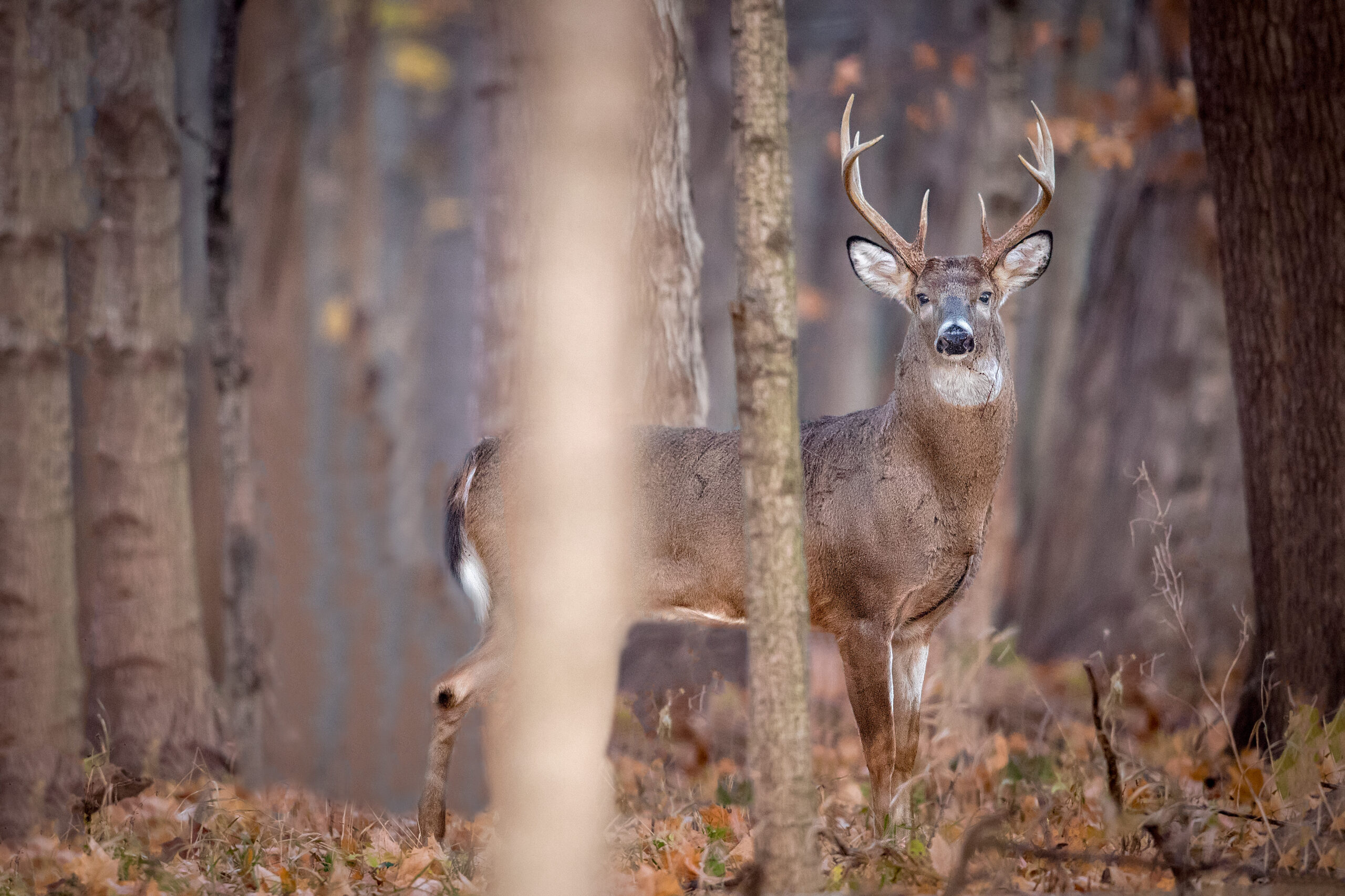
Illinois
Species: Whitetail
Estimated population: no estimate
Fall 2021-22 harvest: 162,752
Overall outlook: “The 2022 to 2023 Illinois deer season is shaping up to be another strong year, with 107 total days of deer hunting opportunity,” said Peter Schlichting, deer project manager with the Illinois Department of Natural Resources. “Weather conditions are fair except for areas currently experiencing near-drought or drought conditions, which may influence deer behavior and body condition. The rut, which typically peaks around Nov. 14, will primarily fall during archery season, but firearm hunters can expect rutting behavior to still be occurring during the first firearm season (Nov. 18 through 20). Harvest and relative abundance trends suggest a stable population statewide. The percentage of adult bucks (older than 2.5 years) in the harvest was 64.4 percent in 2021 to 2022, and this percentage has increased every year since 2013, suggesting an improving age structure.”
Where to Hunt Deer in Illinois
The entire state produces good bucks, but the central and northern counties seem to be best. In central Illinois, hunters can take advantage of abundant public land along the Illinois River, including Anderson Lake, Banner Marsh, Sand Ridge State Forest and Sanganois State Fish and Wildlife Area. In northern Illinois, Redwing Slough Lake has been opened to youth hunters.
“If drought conditions persist into deer seasons, hunters should keep this in mind and set up accordingly,” Schlichting said. Find season dates and bag limits here.
Indiana
Species: Whitetail
Estimated population: No estimate
Fall 2021-22 harvest: 112,481
Overall outlook: Joe N. Caudell, state deer research biologist with the Indiana Department of Natural Resources’ Division of Fish and Wildlife, said prospects for this fall look solid.
“For the 2019-2020 and 2020-2021 hunting seasons, hunters from Indiana have recorded more Boone and Crockett bucks than from any other state, and (Indiana) has been one of the top producers for a decade,” he said. “We do not see that trend declining any time soon. Along with that trend, the percentage of harvested older-age bucks has been steadily increasing over the past few decades, and we do not see that trend changing in the near future.” Check out the recent Outdoor Life feature on how Indiana is now the top trophy whitetail state in the country.
Where to Hunt Deer in Indiana
Caudell said the two northern corners of Indiana have some of the highest deer densities in the state. Because those regions have a high quantity and quality of food, they also produce large bucks. Pigeon River Fish and Wildlife Area in LaGrange County, in northeastern Indiana, has some of the highest harvests in the state for public property. In northwestern Indiana, Willow Slough Fish and Wildlife Area, in Newton County, offers excellent public hunting for deer.
Hunters can view a rut timing map here and the season dates and bag limits here.
Iowa
Species: Whitetail
Estimated population: No estimate
Fall 2021-22 harvest: About 102,800
Overall outlook: “Overall, population trends in Iowa indicate a stable to slightly increasing population,” said Jace Elliott, deer research specialist with the Iowa Department of Natural Resources. “We don’t estimate age structure, but the opportunities to harvest a mature buck throughout the state of Iowa remain very high. We believe Iowa provides one of the best whitetail deer hunting experiences in the country.”
Where to Hunt Deer in Iowa
Elliott said northeastern, central and southern Iowa have historically been deer strongholds for numbers and quality. “As expected, public land pressure tends to decrease as distance from our state’s urban areas increases,” he said.
Clayton and Allamakee counties, which border the Mississippi River in northeastern Iowa, were the top two harvest counties in 2021-2022. Both have several wildlife management areas. In Clayton, check out North Cedar/SNY Magill, a 1,904-acre property consisting mostly of timber. In Allamakee, Lansing WMA covers about 2,310 acres, three-quarters of which are timber and one-quarter upland habitat. Madison County, southwest of Des Moines, was number three for harvest in 2021-2022. Promising WMAs there include Heritage Hills, which covers about 660 acres of upland and timber, and Badger Creek, a 975-acre piece that’s three-quarters upland habitat.
Hunters can check Iowa’s online public hunting atlas, which shows the location and information about public properties across the state. Find season dates and bag limits here.
Kansas
Species: Whitetail (statewide) and mule deer (western half)
Estimated population: 735,680 whitetails, 40,102 mule deer
Fall 2021-22 harvest: 74,348 whitetails, 1,578 mule deer
Overall outlook: Levi Jaster, big-game program coordinator for the Kansas Department of Wildlife, Parks and Tourism, said deer numbers have increased in eastern Kansas and decreased in western Kansas.
“CWD continues to be a big issue in Kansas, with increasing prevalence in western Kansas affecting deer populations and initial detections in new counties in eastern Kansas, including some near the Kansas-Missouri boarder,” he said. “Generally, outside of northwestern Kansas deer management units, buck-to-doe ratios and adult-buck-to-yearling-buck rations are average or above average.”
Where to Hunt Deer in Kansas
Hunters in southeastern Kansas should see more deer this season, Jaster said. The area features good public spots, and hunters shouldn’t forget about Walk-In Hunting program properties, which are private lands leased by the state to allow public access for hunting. If you’re interested in mule deer, Region 3, in southwestern Kansas, has about 25 wildlife areas, with ample room to roam.
Nonresident applications were up again in 2022, Jaster said, setting a new record at 29,973. The lower draw odds means that some guides and outfitters might have unexpected openings, so hunters who received a tag might consider contacting those services, as it might not be too late to book. Read more: Will Kansas Become a Preference Point State for Whitetails? Find season dates and bag limits here.
Kentucky
Species: Whitetail
Estimated population: 919,308 (before 2021 season)
Fall 2021-22 harvest: 132,328
Overall outlook: “Here in Kentucky, we have a phenomenal deer population across the state,” said Kyle Sams, deer and elk program biologist with the Kentucky Department of Fish and Wildlife. “Hunters have ample opportunity to harvest a deer of their choosing with varying weapon types. I would expect the overall harvest to be better than last year, as we had some very unusual and prolonged warm weather during key times of the harvest [last year].”
Sams said about 70 percent of bucks taken in Kentucky are adults. He attributed that to the state’s one-buck limit, adding that most Kentucky hunters let young bucks walk.
Where to Hunt Deer in Kentucky
Sams said hunters should check out the Purchase and Green River regions, in western Kentucky. Green River is typically the best area because it has great habitat and high deer numbers, but the Purchase region also has good populations. In the Green River region, promising spots include 7,574-acre Big Rivers WMA, and 5,446-acre Higginson and Henry WMA, both of which have special restrictions. In the Purchase region, check out Ballard WMA, which covers 8,014 acres and also has special restrictions. Review the state’s hunting guide before planning trips to the properties.
“Hunters should try to do their homework before going afield,” Sams said. “That homework would include, at the very least, scouting the area well in advance of hunting it.”Find the season dates and bag limits here.
Louisiana
Species: Whitetail
Estimated population: minimum 500,000 (will likely be revised)
Fall 2021-22 harvest: 233,400
Overall outlook: Johnathan Bordelon, deer program manager for the Louisiana Department of Wildlife and Fisheries, is upbeat about the 2022 season. Louisiana hunters kill a high percentage of mature bucks. On private land, 84 percent of bucks taken are 2.5 years old or older, and 41 percent are 4.5 or older. That harvest age structure has been stable in recent years and will likely continue this year.
Where to Hunt Deer in Louisiana
Bordelon said the northeastern portion of the state has the highest harvest per forested acre, and wildlife management areas and national wildlife refuges in the region produce some of the largest public-land bucks in Louisiana. Tensas River National Wildlife Refuge, near Tallulah, covers more than 64,000 acres. Hunters can also find good opportunities across northwestern Louisiana. In fact, harvest success rates at some western Louisiana wildlife management areas are the best in the state. In general, areas in western Louisiana have an earlier rut than the areas to the east. That wide range of breeding dates lets hunters pursue rutting deer from October through January, depending on the region.
Bordelon encouraged hunters to take advantage of the state’s diverse breeding chronology. LDWF has maps that reflect peak breeding for the state. Find season dates and bag limits here.
Maine
Species: Whitetail
Estimated population: about 315,000 to 320,000
Fall 2021-22 harvest: 38,947
Overall outlook: “Central and southern Maine deer populations continue to grow, and we have made some significant changes to our antlerless deer permit system to improve our ability to meet doe harvest objectives,” said Nathan R. Bieber, deer specialist with the Maine Department of Inland Fisheries and Wildlife. “Populations in northern, western and Down East Maine are lower and more cyclical, with winter conditions having a big impact on local deer numbers. In 2021, we started messaging about voluntarily passing on young bucks to help improve advanced age structure.”
Where to Hunt Deer in Maine
Bieber said many of Maine’s coastal islands support good deer populations, see very little hunting pressure and are part of the expanded archery program, which offers archery hunting from early September through early December. “It’s worth a trip if you have the time and effort to invest,” he said.
Also, the state has started acquiring land in northern Maine to manage for wintering deer, so there will be new wildlife management areas open to public hunting there in the future.
“In Maine, you can legally hunt on private land if it’s not posted,” Bieber said. “It’s always the best practice to ask for permission, but this does mean you can have a lot of land at your disposal if you are willing to do some homework and make some connections.”
“Edge habitat, where habitat changes from one type to another, is always a good place to start your scouting, but with most of Maine covered in forest, it can seem hard to find,” Bieber said. “Remember that edge doesn’t just mean where a field meets the forest. It can be an area where hardwoods meet a wetland, flat land meets a slope or older growth meets younger growth.” Find season dates and bag limits here.
Maryland
Species: Whitetail and sika deer
Estimated population: 231,000
Fall 2021-22 harvest: 67,445 whitetails, 3,400 sika deer
Overall outlook: Brian Eyler, game mammal section leader with Maryland Department of Natural Resources, said Maryland’s deer population remains stable and offers great opportunities for resident and nonresident hunters.
Where to Hunt Deer in Maryland
Eyler said the western part of the state, in the Appalachian Mountains, offers more traditional mountain deer hunting and large expanses of public lands, including state forests and wildlife management areas. Eastern Maryland, near Chesapeake Bay and the Atlantic Ocean, features more flat-land hunting, with woods interspersed with agriculture. The biggest whitetails come from this area. Also, the lower Eastern Shore, particularly Dorchester County, offers the chance for a sika deer.
“As always, concentrate on finding deer sign and natural foods — acorns and other mast — and hunt those areas,” Eyler said. “Try not to rely on bait. If possible, have multiple stand locations to hunt from based on the current wind conditions.” Find season dates and bag limits here.
Massachusetts
Species: Whitetail
Estimated population: 125,000
Fall 2021-22 harvest: 13,366
Overall outlook: Martin Feehan, deer and moose project leader with the Massachusetts Division of Fisheries and Wildlife, said deer abundance across the state is generally increasing, with about half of the state within the management goal density of 12 to 18 deer per square mile and half higher than that.
Where to Hunt Deer in Massachusetts
Zones 13 and 14, which are Martha’s Vineyard and Nantucket, respectively, have the state’s highest deer densities and provide the best opportunities for harvesting several deer.
“Participating in a deer drive on Nantucket (Zone 14) should be a bucket-list hunt for any avid deer hunter,” Feehan said. “There are incredible sight lines across the scrub oak savannahs, and there are very few places as beautiful and unique to hunt whitetail deer. Nantucket bucks also have some of the most unique antler formations around, often looking like crowns. There are many open public hunting areas there, including some of the best on Nantucket Conservation Foundation lands.”
Hunters seeking a more rustic experience for big bucks should consider zones 1 through 3, which include the Berkshires. The region has habitat similar to the Adirondacks but higher deer densities. Feehan said the area also features many great places to stay and abundant wildlife management areas.
“As deer densities increase in suburban areas across the country, the hunters that make the effort to contact landowners to access deer will often be rewarded,” Feehan said. Find season dates and bag limits here.
Michigan
Species: Whitetail
Estimated population: No estimate
Fall 2021-22 harvest: 395,059
Overall outlook: “We have been experiencing high harvest levels with declining hunter numbers, indicating a stable to increasing population in many parts of the state,” said Chad Stewart, deer, elk and moose management specialist with the Michigan Department of Natural Resources. “With fewer hunter numbers, we expect more bucks to continue to make it through deer seasons, leading to improvement in age structure and rack development.”
Where to Hunt Deer in Michigan
The southern Lower Peninsula, which is dominated by agriculture and experiences mild winters, has good deer numbers, and bucks there typically have better developed antlers, thanks to the high-quality habitat. Stewart said hunters might want to check out Oakland County, especially for an opportunity to hunt late-winter deer during the extended January archery season.
The western portion of the northern Lower Peninsula has antler point restrictions. “If you don’t mind hunting under those requirements, you are likely to see plenty of 2.5-year-old and older bucks running around,” Stewart said.
Hunters seeking a truly remote experience can explore public land in Keweenaw County, at the top of the Upper Peninsula, which holds some great deer and sees little hunting pressure.
“Just be prepared, because winter can arrive fast and furious,” Stewart said. “Knowing where deer are bedding, traveling and feeding throughout fall, as well as predominant wind directions, can give you the advantage you need,” Stewart said. Find season dates and bag limits here.
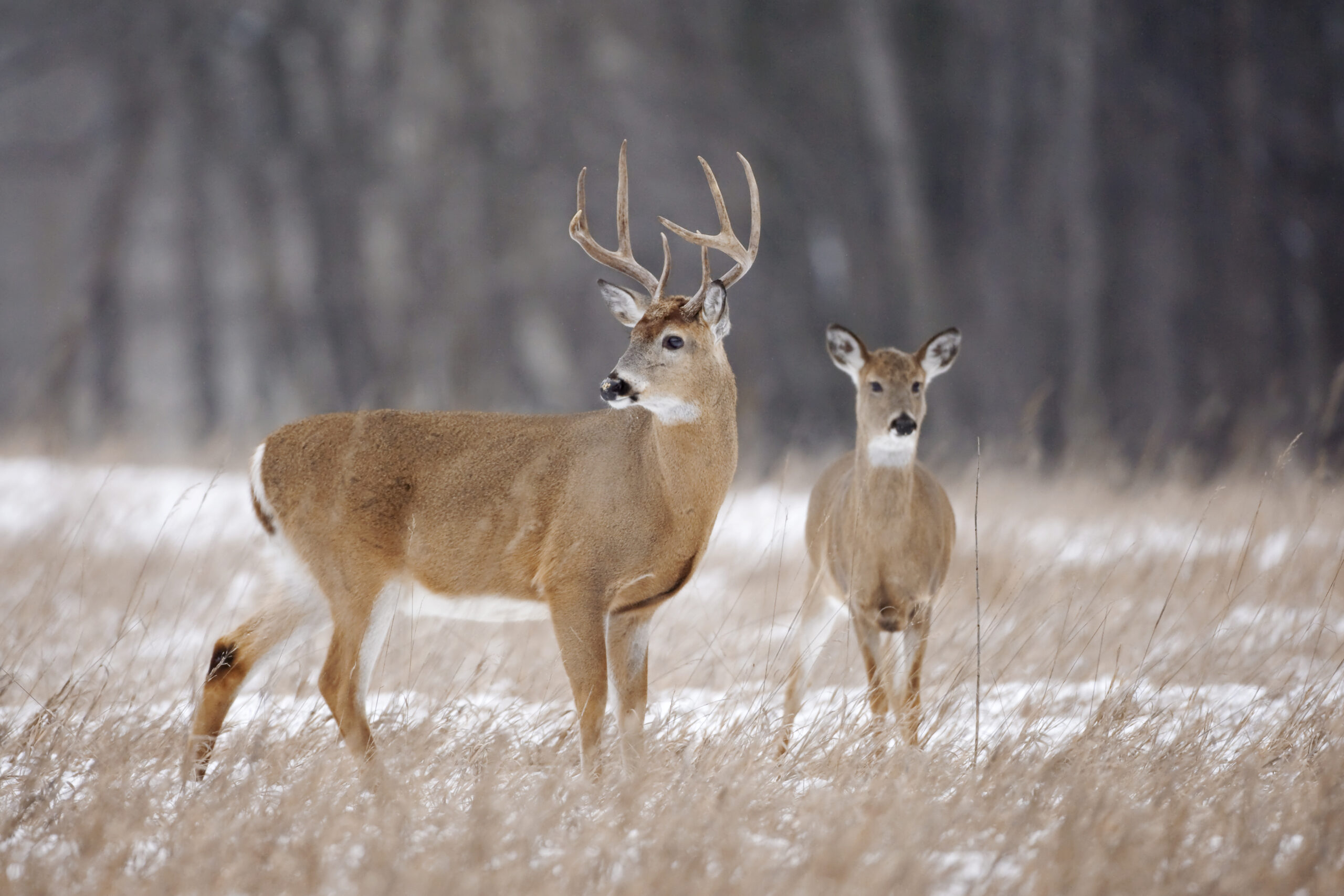
Minnesota
Species: Whitetail
Estimated population: No estimate
Fall 2021-22 harvest: 184,698
Overall outlook: Barbara Keller, big-game program leader for the Minnesota Department of Natural Resources, said deer populations are stable to increasing in the northwestern, central, southwestern and southeastern parts of the state. The severe winter of 2021-2022 has likely affected populations in northeastern and north-central Minnesota, which will probably maintain the already low deer densities there. Read Outdoor Life’s recent feature on declining deer populations in the North Woods.
Where to Hunt Deer in Minnesota
Southeastern Minnesota has long been a hotspot for deer hunters, as the area’s topography often lets bucks grow older. Whitewater WMA, which has three units, remains a popular destination. Lac Qui Parle County, which borders South Dakota in southwestern Minnesota, is known primarily for waterfowl but features many wildlife management areas that hold plenty of deer.
Quick tip: “The early antlerless season, which occurs Oct. 20 through 23, is an excellent opportunity for hunters to get out early in the season and help balance sex ratios ahead of the breeding season,” Keller said. “This season is only implemented in areas of the state that are above population goals, so be sure the check if it is open in the area you hunt.” Find season dates and bag limits here.
Mississippi
Species: Whitetail
Estimated population: 1.47 million (2020 estimate)
Fall 2021-22 harvest: Not yet available
Overall outlook: “The statewide population appears healthy,” said Kamen Campbell, assistant deer coordinator with the Mississippi Department of Wildlife, Fisheries and Parks. “The harvest has reached levels in recent years not seen in nearly two decades. Mississippi continues to rank in the top three nationally for the highest percent of mature bucks in the harvest. Additionally, we rank in top 10 for harvest per square mile and in the top two for number of deer harvested per hunter. While the majority of the state hosts a strong and stable deer herd, the Mississippi River counties remain at the mercy of the river. Despite the inconvenience of flooding, the river counties are blessed with some of the best soil fertility in the nation, growing some of the best deer in the state.”
Where to Hunt Deer in Mississippi
Campbell said the state’s wildlife management areas are so popular that MDWFP implemented draw-hunt opportunities for parts or all of the season to ensure proper management and good hunting opportunities.
The state’s South Delta wildlife management areas have experienced major flooding in recent years, and although that did limit opportunity, it also increased the forage in the region. “Our South Delta WMAs are likely to produce some record-quality bucks over the next couple of years,” Campbell said.
Mississippi also has several quality wildlife management areas along the Tennessee-Tombigbee Waterway. “These places may not get the notoriety of the Mississippi Delta, but they offer large tracts of land and have less hunting pressure than some of the more popular WMAs,” Campbell said.
Campbell said this fall, Mississippi will hold its first velvet deer hunt. It runs Sept. 16 through 18, and archery hunters on private land can harvest one legal buck. The buck must be reported and tested for CWD. A special permit is required to hunt during the season, and the buck will count toward the season bag limit.
“Nonresident hunters should watch the weather forecast prior to a trip,” Campbell said. “Temperatures throughout deer season can range from 25 to 75 degrees and change every week. Additionally, those looking to hunt the rut should check out the breeding date map at MDWFP.com/deer to see when the rut occurs where they plan to hunt. Breeding dates range from mid-November in northwestern Mississippi to early February in southeastern Mississippi.” Find season dates and bag limits here.
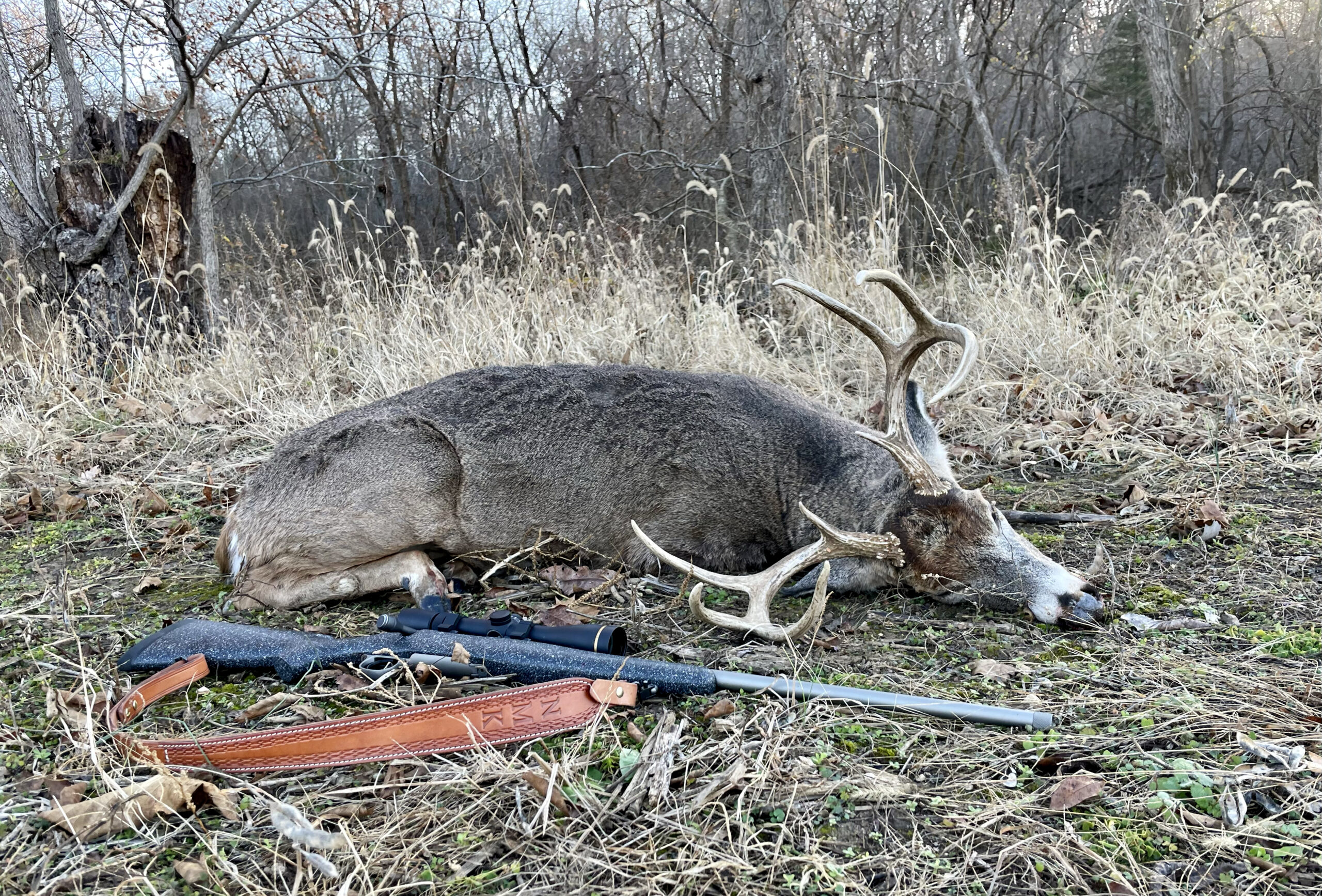
Missouri
Species: Whitetail
Estimated population: 1.5 million
Fall 2021-22 harvest: 295,143
Overall outlook: Jason Isabelle, cervid program supervisor for the Missouri Department of Conservation, said deer numbers across most of the state are abundant and growing. That, coupled with recent season and permit liberalizations, has biologists expecting a strong 2022 harvest.
“Although nice bucks are harvested throughout the state each year, northern Missouri generally has the greatest potential to produce larger-antlered bucks. The mixture of forest, cropland and grassland of many northern Missouri counties provides great habitat for whitetails. There is an antler-point restriction in place in many northern Missouri counties, which helps increase age structure of the buck population.”
Where to Hunt Deer in Missouri
The northeastern and northwestern parts of the state generally have the greatest potential to produce large-antlered bucks. Both regions feature several conservation areas, some of which fall under statewide regulations and others that only allow archery or muzzleloader hunting. Popular spots in northeastern Missouri include Rebel’s Cove Conservation Area, which spans about 4,224 acres, and Union Ridge Conservation Area, which covers 8,262 acres. In northwestern Missouri, Emma and Leah Seat Memorial Conservation Area covers 3,479 acres.
“Given that Missouri’s deer season spans a four-month time period, it’s important for hunters to consider the stage of the season they’re hunting in and the factors that are going to influence when and where deer will be moving during daylight hours,” Isabelle said. Find season dates and bag limits here.
Montana
Species: Mule deer and whitetails
Estimated population: 293,950 mule deer, 212,814 whitetails
Fall 2021-22 harvest: 49,856 mule deer, 44,713 whitetails
Overall outlook: Brian Wakeling, game management bureau chief with the Wildlife Division of Montana Fish, Wildlife and Parks, said Montana’s 2021 statewide mule deer population estimate indicated a decline and was slightly lower than the 10-year average. In 2021, 60 percent of mule deer bucks harvested had at least four points on one antler, excluding brow tines. The statewide buck-to-doe ratio in 2021 post-season surveys was 27 to 100. Montana’s statewide whitetail deer estimate indicated that population was increasing and was higher than the 10-year average. The 2021 whitetail buck harvest was significantly higher than the long-term average of 23,158. In 2021, 73 percent of whitetail bucks harvested had at least four points on one antler.
Where Hunt Deer in Montana
Although numbers there appear to be declining, Region 6 (northeastern Montana) is still considered about 31 percent higher than the long-term average of mule deer counted during spring surveys.
The 2021 population estimate for northwestern Montana (Region 1) was is about 9 percent lower than the 10-year average, but the area still has the highest number of whitetails estimated (69,094) relative to other regions in Montana. The western portion of the state has many more state wildlife areas than the eastern part. Montana also has loads of federal land. Further, the state’s Block Management Program, a cooperative initiative between private landowners and FWP, helps landowners manage hunting activities and provide people with free hunting access to private land and sometimes adjacent or isolated public lands. Wakeling said hunters should become familiar with Montana’s hunter access laws and regulations before a trip. Find season dates and bag limits here.
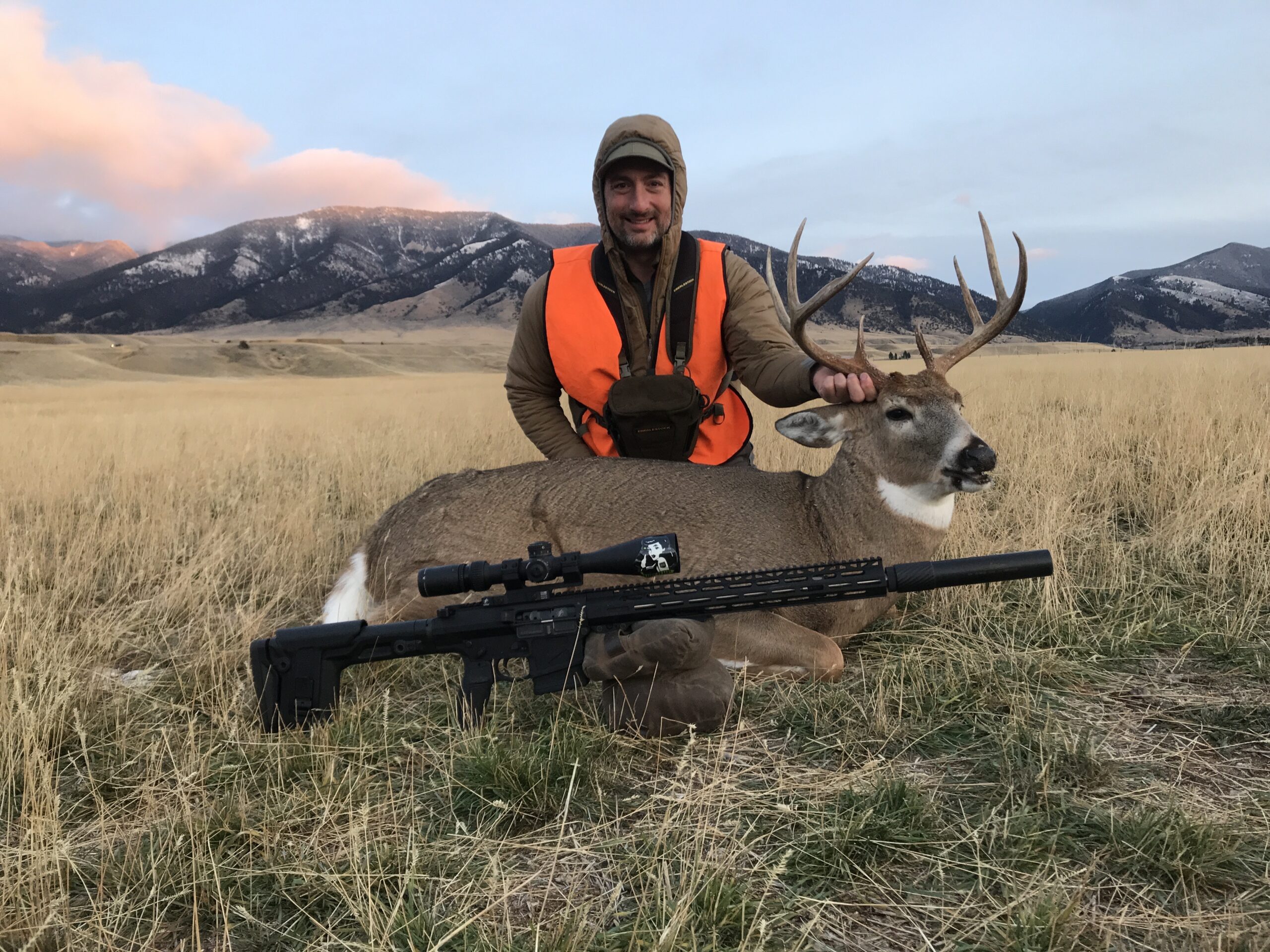
Nebraska
Species: Mule deer and whitetail deer
Estimated population: No estimate
Fall 2021-22 harvest: 44,802 whitetails, 8,575 mule deer
Overall outlook: “Parts of Nebraska took a bit of a hit from EHD in 2021, and whitetail numbers have declined in the northern half of the state,” said Luke Meduna, big-game program manager with the Nebraska Game and Parks Commission. “Those declines vary by local area. Mule deer populations have declined over the past few years, and we reduced mule deer buck permits in many western units for 2022. Buck age structure has remained stable for the past several years, with about 22 percent of the whitetail harvest being yearling bucks and 40 percent being 3 and older. Mule deer have a similar trend, with 12 percent being yearlings and 50 percent of the harvest being 3 and older.”
Where to Hunt Deer in Nebraska
Whitetail densities are best in the southwestern portion of the state and along major river corridors. Less than 3 percent of land in Nebraska is publicly accessible, but the southwestern corner holds a surprising number of open properties. Hunters might investigate the 1,118-acre James N. Douglas Wildlife Management Area or the 564-acre Hickory Ridge Wildlife Management Area, both in Johnson County. Plus, the state’s Open Fields and Waters Program has opened hundreds of thousands of acres to hunters. The Frenchman and Platte units in western Nebraska are best for mule deer. Chase County, in southwestern Nebraska has some very large blocks of OFW land. Find season dates and bag limits here.
Nevada
Species: mule deer
Estimated population: 78,000
Fall 2021-22 harvest: 6,185
Overall outlook: Cody Schroeder, wildlife staff specialist for the Nevada Department of Wildlife, said the state’s deer population is trending downward.
Where to Hunt Deer in Nevada
Schroeder pointed hunters to the northeastern portion of state, specifically Elko and Humboldt counties. Elko holds the Mountain City Ranger District of the Humboldt-Toiyabe National Forest. Humboldt has the Santa Rosa Ranger District.
“Bring your best optics available, and use them as much as possible,” Schroeder said. “More time glassing and less time hiking can sometimes pay off for patient hunters. Early-season hunters may want to concentrate near water sources and cool north-facing draws.” Find season dates and bag limits here.
New Hampshire
Species: Whitetail
Estimated population: 100,000
Fall 2021-22 harvest: 12,551
Overall outlook: “The outlook for New Hampshire’s deer population is very promising,” said Becky Fuda, deer project leader with the New Hampshire Fish and Game Department. “The 2021 total harvest was the sixth-highest in the state’s history going back to 1922, and the adult buck harvest was the highest on record. Recent harvests continue to remain among the highest in the state’s history, with 14 of the top 20 harvests all taking place since 2000.”
Where to Hunt Deer in New Hampshire
Fuda said the highest deer densities are in the southeastern part of the state, in wildlife management units L and M. To decrease deer populations in those units, NHFG offers special antlerless permits. In unit L, 2000 of those special permits are available by lottery. In Unit M, 4,000 permits are available on a first-come, first-served basis. These units are comprised mostly of private land, but there are several wildlife management areas there. Hunters can find maps and information at wildlife.state.nh.us/maps/wma.html. The Connecticut River Valley in western New Hampshire also has relatively high deer numbers. Hunters can access several wildlife management areas in those units, plus several state parks and forests.
“While deer densities are low in New Hampshire compared to Southern or Midwestern states, hunting seasons are quite long,” Fuda said. “Archery hunters can take advantage of three months of deer hunting opportunity, with the season stretching from Sept. 15 to Dec. 15 (Dec. 7 in WMU A), and the firearms season is 26 days long (19 days in WMU A). These long seasons leave plenty of time to concentrate efforts during periods when hunting conditions are good. If hunters aren’t successful early in the season, they might get another shot after a fresh snow later in the season.” Find season dates and bag limits here.
New Jersey
Species: Whitetail
Estimated population: 112,052
Fall 2021-22 harvest: 36,787
Overall outlook: Carole Stanko, chief of the Bureau of Wildlife Management for the New Jersey Division of Fish and Wildlife, said the state’s deer population has been stable the past five years, but 2022-’23 promises an increase in deer numbers because 2021’s abnormally low harvest, which is attributed to reduced participation, excellent mast availability and unseasonably warm and wet weather.
Where to Hunt Deer in New Jersey
Stanko said hunters should check out public lands in deer management zones in regulation sets 6, 7, and 8. Properties in 6 include the Morris County Park System, Farney and Allamuchy Mountain state parks, and Rockaway River, Sparta Mountain Weldon Brook, and Wildcat Ridge wildlife management areas. In 7, look to Spruce Run Recreation Area, the Hunterdon County Park System, and Clinton and Musconetcong River wildlife management areas. In 8, look to the Hunterdon and Morris county park systems; Voorhees, Hacklebarney and Allamuchy Mountain state parks; and Pequest, Rockport, Lockwood Gorge, Musconetcong River, South Branch and Black River wildlife management areas. Many of these areas have special rules, so consult regulations.
Use New Jersey’s interactive hunting and trapping explorer to find wildlife management areas. Find season dates and bag limits here.
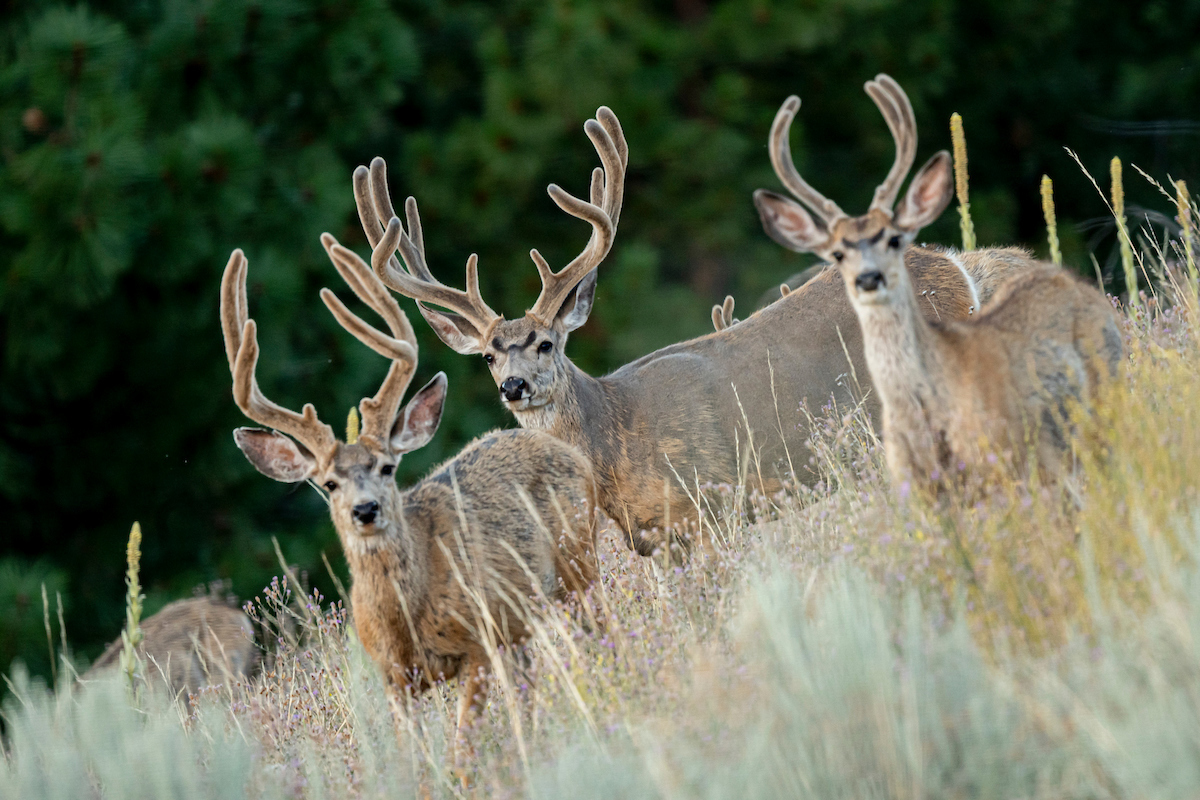
New Mexico
Species: Mule deer (desert and Rocky Mountain subspecies) and whitetail deer (Coues and Texas subspecies)
Estimated population: 80,000 to 100,000 mule deer, 8,000 to 10,000 whitetails
Fall 2021-22 harvest: 8,827
Overall outlook: “The population is stable in most areas of the state, with stable production and buck-to-doe ratios,” said Orrin Duvuvuei, deer program manager with the New Mexico Department of Game and Fish. “Some local populations in areas with good moisture may be slightly increasing. Conversely, a few local areas that are in long-term drought may be slightly decreasing.”
Where to Hunt Deer in New Mexico
Duvuvuei said the northern portion of the state and the sand hills country in the eastern part of New Mexico hold good deer numbers, with many bucks sporting large antlers. These areas have a good mixture of forest service, Bureau of Land Management or State Land Office properties.
“Hiking to and glassing areas that you cannot see from the road will increase your opportunities to locate and harvest a buck,” Duvuvuei said. “Don’t be afraid to hike several miles each day and glass from likely vantage points.” Find season dates bag limits here.
New York
Species: Whitetail
Estimated population: not available
Fall 2021-22 harvest: 211,269 (estimated)
Overall outlook: Jeremy Hurst, big-game unit leader for the New York Department of Environmental Conservation’s Division of Fish and Wildlife, said biologists expect 2022 deer hunting prospects to be on par with those of recent years in most of the state.
“Deer went into winter in good condition last fall and fared well through the relatively mild winter,” he said. “Overall, we expect harvest of antlered and antlerless deer to increase slightly from 2021. However, portions of the mid-Hudson Valley, Long Island and some areas east of Lake Ontario were hit with epizootic hemorrhagic disease last year, and in those areas, hunters will likely see and take fewer deer. Still, the deer population across New York is robust, and our state provides hunters great opportunity to pursue deer with nearly 4 million acres of public land and seasons that begin in September in some areas and continue through January in others.”
Where to Hunt Deer in New York
Wildlife management units 8N, 8R, 8X, in western New York, had the highest number of bucks taken per square mile — more than 5.1 — in 2021. Region 8 (the Rochester/Finger Lakes area) has more than 20 wildlife management areas, including Erwin, Big Flats, Helmer Creek and West Cameron. Unit 4F, in east-central New York, had the highest buck harvest, with 3,754. Region 4 (Capital Region/Northern Catskills) has 16 wildlife management areas, including Hooker Mountain, Crumhorn Mountain and Bear Spring Mountain. More than 60 percent of bucks taken in 2021 were 2.5 years old or older, which is up about 45 percent from a decade ago. Find season dates and bag limits here.
North Carolina
Species: Whitetail
Estimated population: 1 million
Fall 2021-22 harvest: 168,427
Overall outlook: “Deer populations in the Northwestern, Central, Northeastern and Southeastern deer zones are stable,” said Moriah Boggess, deer biologist with the North Carolina Wildlife Resources Commission. “Deer densities in the Northeastern and Southeastern zones appear to have stabilized after a long-term decline and subsequent changes in bag limits that stabilized harvest. The Western Deer Zone continues to see population increases, with strong upward trends in deer population indices in many counties, particularly on private properties. As these trends have continued, so has the increase in doe harvest opportunities provided by regulation changes.”
Where to Hunt Deer in North Carolina
Boggess said the Central and Northwestern deer zones have the highest deer densities and overall deer harvest. The largest-antlered bucks consistently come from the north-central counties of the piedmont region. There are many Game Land properties across the Piedmont where hunters can find excellent opportunities. CWD was recently detected in Yadkin County, so surveillance areas have been established with special regulations to address the disease. Boggess said hunters should stay up to date on regulations in the affected area. Find season dates and bag limits here.
North Dakota
Species: Mule deer and whitetail deer
Estimated population: No estimate
Fall 2021-’22 harvest: 29,910 whitetails, 10,000 mule deer
Overall outlook: Bill Jensen, big-game biologist with the North Dakota Game and Fish Department, said deer numbers are stable throughout most of the state, but there had been a significant die-off from epizootic hemorrhagic disease along the Missouri River corridor.
Where to Hunt Deer in North Dakota
Jensen said deer numbers are probably the highest in southwestern North Dakota. The area features many properties enrolled in the Private Land Open to Sportsmen program, plus Department of Trust lands and the Cedar River and Little Missouri national grasslands. In eastern North Dakota, check out Sheyenne National Grassland. Jensen said people hoping to find permission to hunt on private land should make landowner contacts well before the season. Find season dates/bag limits here.
Ohio
Species: Whitetail
Estimated population: no estimate
Fall 2021-22 harvest: 196,988
Overall outlook: Clint McCoy, deer biologist with the Ohio Department of Natural Resources, said deer populations are increasing in almost every corner of the state and have been for the past five to seven years. That trend will likely continue, as the 2021-22 season produced a substandard antlerless harvest.
“Last season’s antlerless harvest, as a proportion of the total, was as low as it’s been since the late 1990s,” he said. “This will, unfortunately, expedite the growth of the herd in the years ahead. While it will be a target-rich environment for many hunters, negative deer-human interactions will likely increase (agricultural damage and vehicle strikes). We have loosened up regulations to encourage hunters to harvest additional does. We just need them to take advantage of the opportunities to help us … stabilize populations.”
McCoy added that almost one-third of bucks taken in 2021 were 3.5 years old or older, and less than 40 percent were 1.5. That’s a stark change from the mid-1990s, when 60 to 70 percent of harvested bucks were 1.5 years old.
Where to Hunt Deer in Ohio
The combination of big bucks and large populations occurs along a diagonal line, roughly from Cincinnati to Cleveland, where the hill country of eastern Ohio meets the farmland of western Ohio (the clear distinction of land types caused by the last glaciation event), McCoy said.
“It’s along this gradient where you find the mixture of habitat types well suited to the whitetail deer. Row-crop agriculture mixed with forested hills provides lots of habitat diversity — places for deer to eat and places to seek cover,” he says. Hunters looking to stretch their legs might also consider the sprawling Wayne National Forest in southeastern Ohio.
“With population trends that are increasing and last season’s proportionally low antlerless harvest, odds are pretty good that an Ohio hunter will find themselves hunting in an area that can tolerate some additional antlerless harvest,” McCoy said. “Take advantage of the current opportunities that are available to harvest an extra antlerless deer or two.” Find season dates and bag limits here.
Oklahoma
Species: Mule deer and whitetail deer
Estimated population: about 750,000 whitetails and 3,000 to 5,000 mule deer
Fall 2021-22 harvest: 117,000 total deer
Overall outlook: Dallas Barber, big-game biologist for the Oklahoma Department of Wildlife Conservation, said deer populations continue to trend upward, and hunters are seeing more mature bucks.
Where to Hunt Deer in Oklahoma
Most of the state now produces trophy bucks, but northwestern and southeastern Oklahoma are traditional hotspots for big deer. In the southeastern portion of the state, hunters might want to check out Hugo WMA, which covers more than 18,000 acres. Special seasons and regulations apply. In northwestern Oklahoma, Hal and Fern Cooper WMA totals more than 16,000 acres.
“While corn feeders can be a successful approach, don’t look past oak flats once the acorns have dropped,” Barber said. “They are much preferred over any baits.” Find season dates and bag limits here.
Oregon
Species: Blacktail deer (western Oregon), whitetail deer (primarily in northeastern Oregon) and mule deer (east of the crest of the Cascades)
Estimated population: 161,412 mule deer, 320,000 blacktails; no estimate for whitetails
Fall 2021-22 harvest: 38,451 mule deer and blacktails; 1,329 whitetails
Overall outlook: “Blacktails are stable and plentiful in western Oregon,” said Justin Dion, assistant wildlife biologist with the Oregon Department of Fish and Wildlife’s game program. “Whitetails are recovering from recent EHD/AHD outbreaks, but (are) in good numbers. Mule deer, like in the rest of their range, are struggling in Oregon. They continue to decline in number across the eastern half of the state. Habitat quality issues, climatic changes and fire frequency continue to negatively impact their numbers.”
Where to Hunt Deer in Oregon
In western Oregon, Umpqua, Willamette, Siuslaw, Mt. Hood and Fremont-Winema national forests offer seemingly endless possibilities. In the northeastern part of the state, hunters can check out Umatilla and Wallowa-Whitman national forests.
“Oregon has had a lot of wildfires the past couple of years,” Dion said. “Large-scale fires can create huge areas of really great deer habitat. We saw this in some large fires that took place in the 2010s. It takes about five to seven years before the habitat is really productive, but with good spring rains, these burns are great places to find deer feeding. Those are the areas I would key in on if I were deer hunting in Oregon.” Find season dates and bag limits here.
Pennsylvania
Species: Whitetail
Estimated population: No estimate
Fall 2021-22 harvest: 376,810
Overall outlook: Jeannine T. Fleegle, wildlife biologist with the Deer and Elk Management Section of the Pennsylvania Game Commission, said 22 of the state’s 23 wildlife management units have stable deer populations. One unit is decreasing by design to address chronic wasting disease. Overall, deer populations should be similar to what they were in recent years. Because of antler-point restrictions, 62 percent of bucks taken in 2021 were 2.5 years old or older.
Where to Hunt Deer in Pennsylvania
Hunters interested in high deer numbers should look to the southwestern part of the state. As with many areas of Pennsylvania, that area has many state game lands open to public hunting.
“For larger bucks in bigger land tracts, look to the north-central part of the state, especially for those willing to get away from the roads at least a half-mile,” Fleegle said. “Hunting in these areas is similar to hunting in New Hampshire, Vermont, and Maine. Sproul State Forest in Clinton County offers a rugged hunt for those in good physical condition. There may not be as many deer here as elsewhere in the state, but it is good place to find older bucks. There is also the Susquehannock State Forest in Potter County. This area has relatively good road access, but there are still places where hunters can get away from the roads and parking lots. There are more deer in this area of the state, and also good-quality bucks.”
“Figure out where deer are coming from in the mornings and going to in the evenings, and where the food sources are and will be during the season, as well as thick cover they may seek when pressured, and any bedding areas,” Fleegle said. Find season dates and bag limits here.
Rhode Island
Species: Whitetail
Estimated population: No estimate
Fall 2021-22 harvest: 2,139
Overall outlook: Dylan Ferreira, senior wildlife biologist with the Rhode Island Department of Environmental Management’s Division of Fish and Wildlife, said he’s excited about the state’s buck harvest breakdown, which indicates solid age structure in the herd. During check station checks the first weekend of November and December 2021, the yearling male harvest was just 9 percent, and mature bucks — 3.5 years old or older — made up about 50 percent of the harvest.
Where to Hunt Deer in Rhode Island
Arcadia Management Area, in the southwestern portion of the state, usually has the highest deer harvest. Ferreira said it’s a large property and likely sees the most hunting pressure. The northern part of Rhode Island typically produces larger bucks. Hunters can try Durfee Hill, a 2,011-acre property near Glocester.
“Rhode Island is a small state, as it takes just over an hour to get from the southern coast to the northern state line,” Ferreira said. “Don’t hesitate to pack up and try another location right down the road or even on the other side of the state.” Find season dates and bag limits here.
South Carolina
Species: Whitetail
Estimated population: 700,000
Fall 2021-22 harvest: 174,569
Overall outlook: “Although the harvest was down slightly in 2021, South Carolina continues to rank near the top among states with the highest deer harvest per unit area,” said Charles Ruth, big-game program coordinator for the South Carolina Department of Natural Resources. “The outlook for 2022 is excellent.”
Where to Hunt Deer in South Carolina
Ruth said counties in the lower coastal plain — including Allendale, Bamberg, and Hamton — are perennial hotspots. Although public hunting opportunities in the area are somewhat limited, wildlife management areas such as Webb, Hamilton Ridge and Palachucola, which are in SCDNR’s Lottery Hunts Program, are good bets. In the piedmont region, the Sumter National Forest offers vast amounts of public hunting opportunity interspersed with private land across several counties.
“With the exception of the sliver of mountains in the northwestern portion of the state, the breeding season in South Carolina is mid-October through mid-November, with the last week in October and the first week in November being the time when the highest percentage of females conceive,” Ruth said. Find season dates and bag limits here.
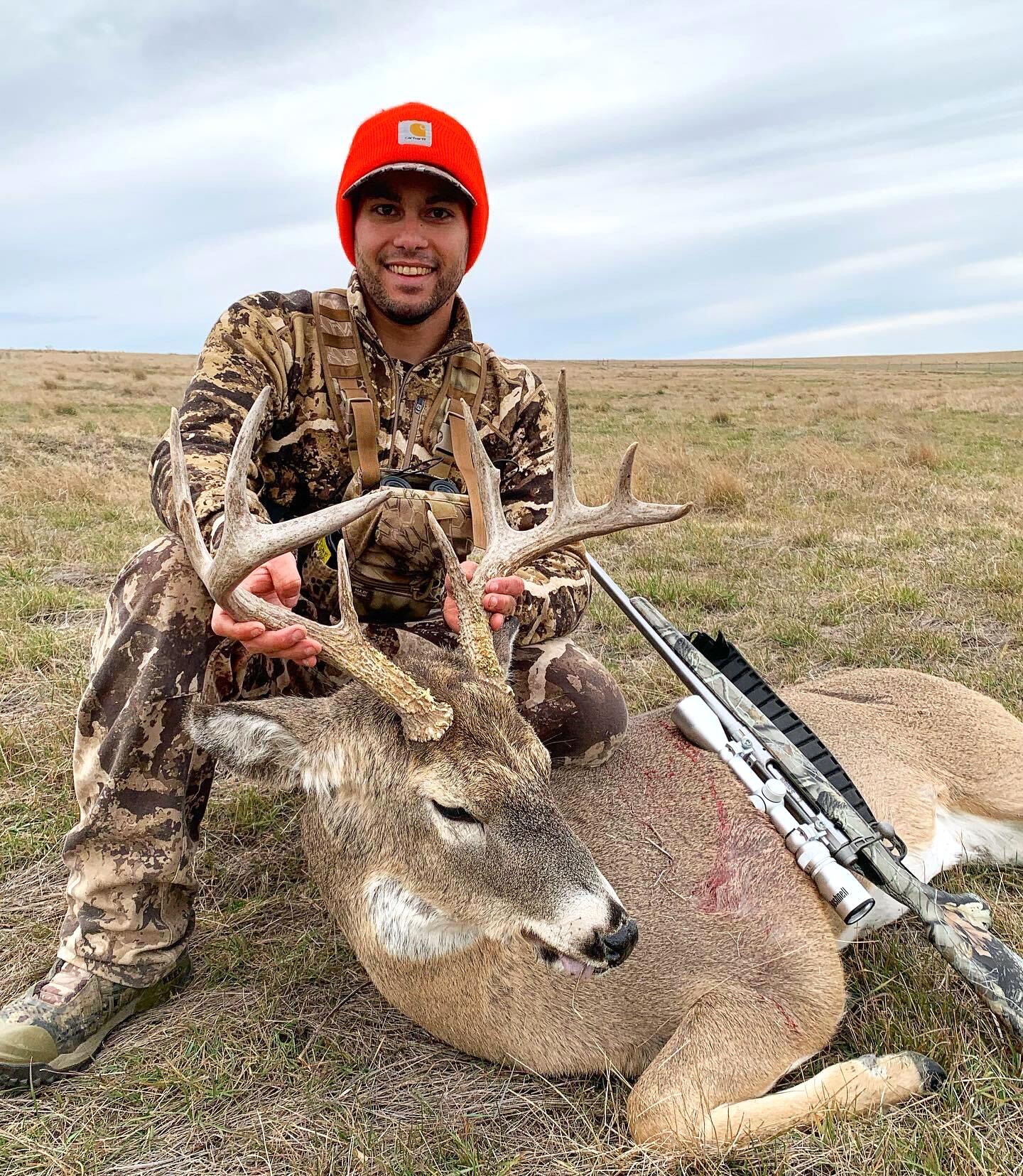
South Dakota
Species: Mule deer and whitetail deer
Estimated population: 436,000 whitetails, 84,700 mule deer
Fall 2021-22 harvest: 48,580 whitetails, 6,565 mule deer
Overall outlook: Steve Griffin, big-game wildlife biologist for South Dakota Game, Fish and Parks, said population trends are slightly increasing to stable in most areas. The state experienced some areas of EHD in Summer 2021 that will set some populations back. Information is available on the SDGFP website.
Where to Hunt Deer in South Dakota
Historically, the eastern third of South Dakota has produced the biggest bucks. The area from Aberdeen northwest to the border has almost uncountable public properties, including game production areas, waterfowl production areas and walk-in areas. In the far western reaches of the state, Black Hills National Forest offers more than 1.25 million acres of public hunting access.
Eastern South Dakota has many sloughs and other wetlands, and riparian cover near these waters makes great bedding cover. Don’t overlook them when glassing for deer. Find season dates and bag limits here.
Tennessee
Species: Whitetail
Estimated population: 1.6 million
Fall 2021-22 harvest: 132,214
Overall outlook: Garrett Clevinger, deer management program coordinator for the Tennessee Wildlife Resources Agency, said prospects look good. The state has experienced a decline in overall harvest since the rise in hunter participation because of COVID-19, but the percentage of bucks 2.5 years old or older in the harvest continues to increase.
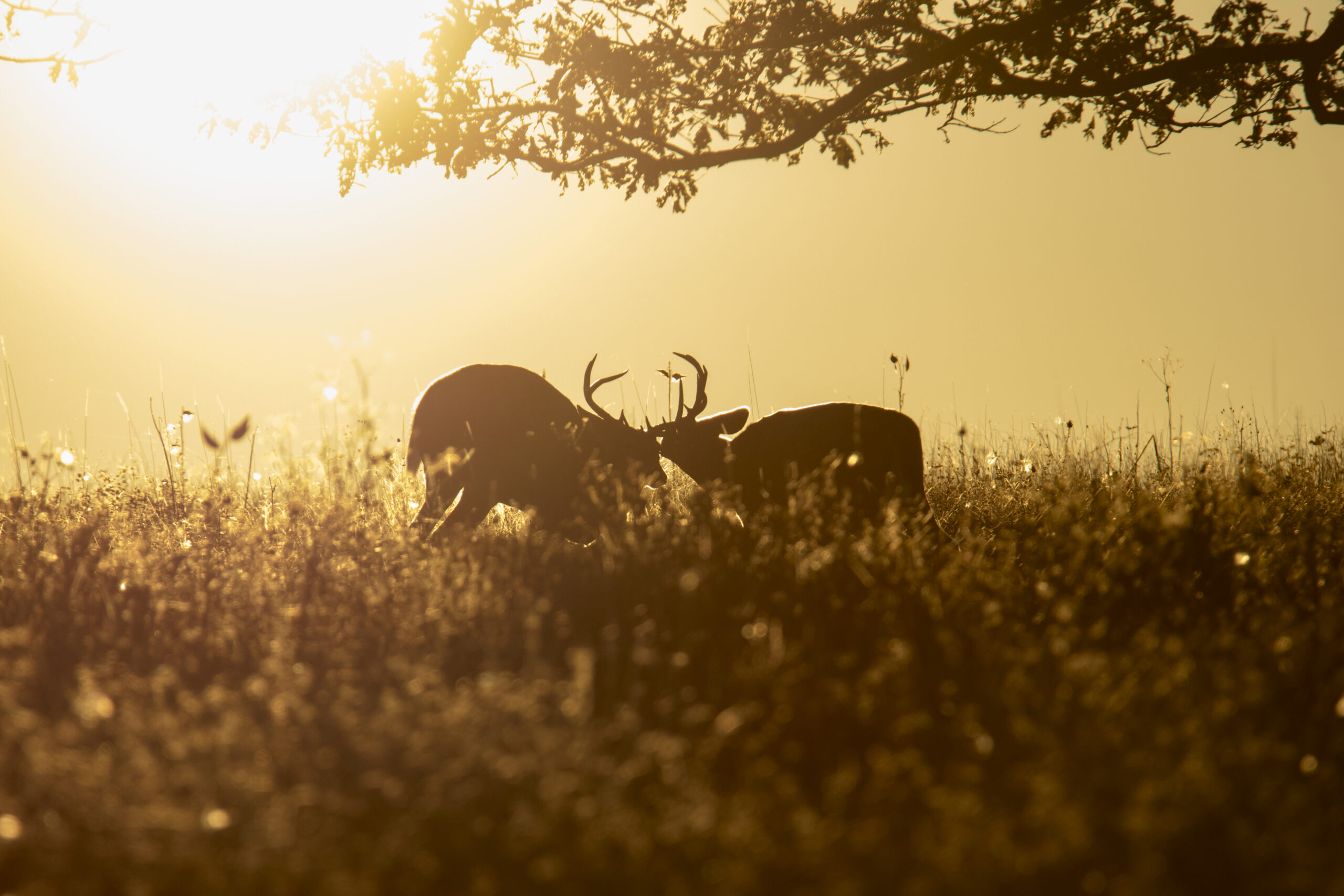
Where to Hunt in Tennessee
Clevinger said units “L” and “CWD” typically have the highest harvest numbers. L covers a large block of counties in the central and west-central portion of the state. Hunters in this area can check out Cheatham WMA, a 20,810-acre property with upland forest, pine stands and food plots. CWD includes 12 southwestern Tennessee counties affected by CWD. Hunters there can look to the 11,215-acre wildlife management area portion of the Chickasaw State Forest. Hunters should familiarize themselves with CWD regs: Find season dates and bag limits here.
Texas
Species: Whitetail deer and mule deer
Estimated population: 5.42 million
Fall 2021-22 harvest: 827,928 whitetails, 9,658 mule deer
Overall outlook: Alan Cain, whitetail deer program leader for the Texas Parks and Wildlife Department, said 2022 is expected to be good in terms of harvest numbers and opportunities. Still, as of early summer, deer faced some tough conditions, and hunter expectations should be tempered.
“Unbearable drought has gripped two-thirds of the state, with no immediate relief in sight,” he said. “Temperatures in May and early June have exceeded multiple 100-degree days in southern and central Texas, and the wind has been relentless, robbing the soil of moisture and leaving much of the landscape in a tinge of brown. While 2022 is not quite as bad as 2011, conditions are certainly moving that direction in a hurry.”
The Edwards Plateau in south-central Texas has the highest deer numbers, he added. The Cross Timbers region in northern Texas has the second highest deer population. The South Texas Plains ecoregion is known for mature bucks and above-average antler quality. Read next: Texas Drought is a Problem for Deer Herds and Antler Growth.
Where to Hunt Deer in Texas
Cain said Texas just doesn’t have much public land. “For hunters looking areas with higher deer densities, I would concentrate on the Hill Country and put in for the draws at the Kerr and Mason Mountain wildlife management areas,” he said. “For antler quality, try the Chaparral WMA in southern Texas and Matador wildlife management areas in the rolling plains of Texas. The Gus Engeling WMA in the Oak Prairies region also produces some quality bucks. Again, these are all draw hunts for public lands, but it’s worth the effort to put in for the draw.”
“Texas has one of the longest deer seasons in the nation, so take some time this fall and winter to enjoy one of the best deer herds in the country,” Cain said. Find season dates and bag limits here.
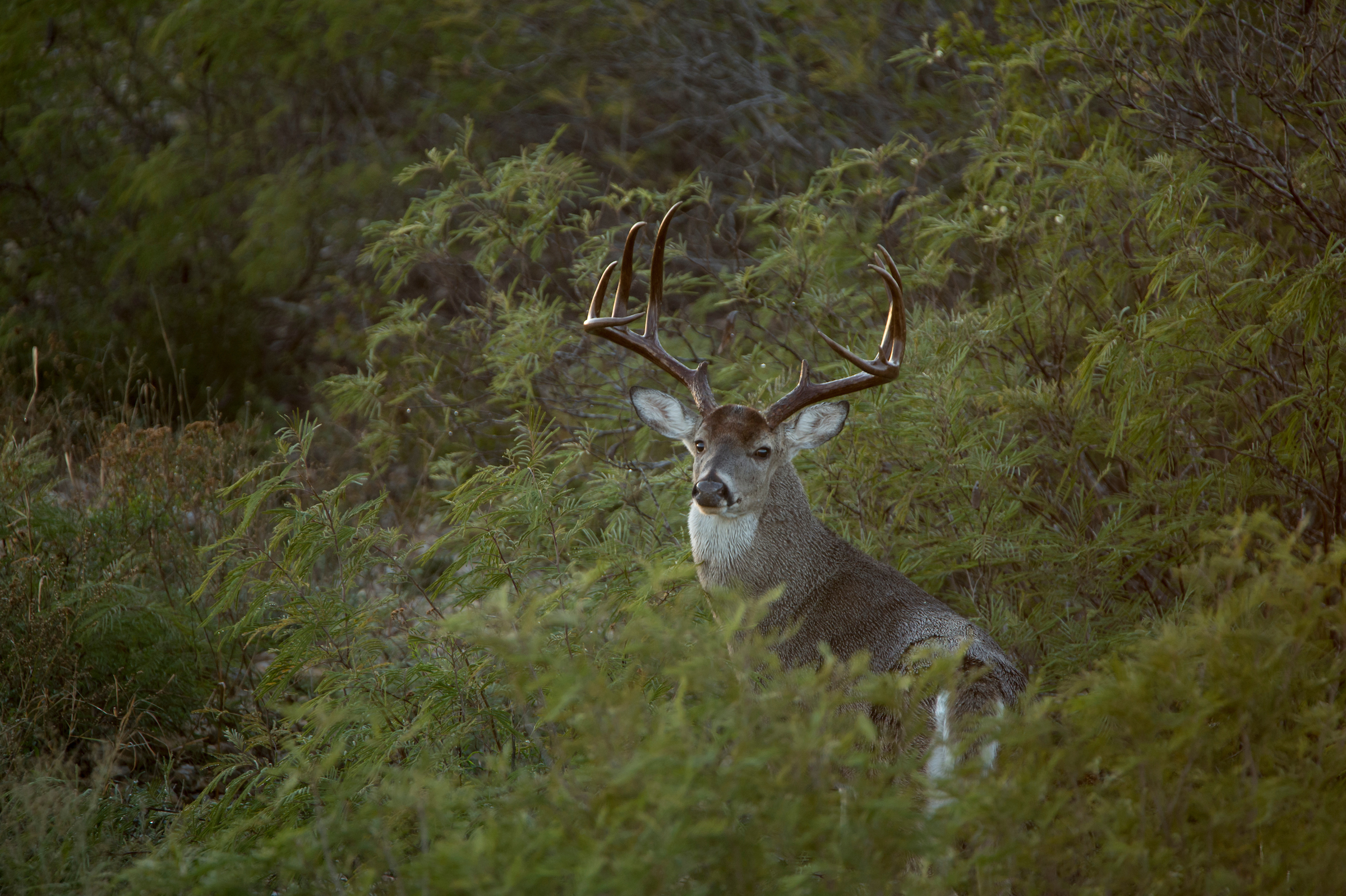
Utah
Species: Mule deer
Estimated population: 305,700
Fall 2021-22 harvest: 26,631
Overall outlook: Heather Hill Bernales, biometrician with the Utah Division of Wildlife Resources, said the state’s herd is smaller than the population objective of 404,900 and is down about 7,200 deer from 2021, largely because of two years of severe drought. For 2022, Utah has recommended a slight decrease in general-season deer permits (73,075) to manage buck-to-doe ratios consistent with its management plan.
Where to Hunt Deer in Utah
Traditionally, the Pine Valley, Oquirrh-Stansbury, and Wasatch East deer units feature good hunting with lots of public access. In 2021, state biologists said the central portion of the state saw more moderate impacts from recent droughts, and deer had been buffered a bit in some of those units.
“If it were always easy, it wouldn’t be called hunting,” Covy Jones, big-game program coordinator for the Utah Division of Wildlife Resources, said in 2021. “Work hard, and realize nothing is ever a guarantee. Enjoy the experience of the hunt, and if you are fortunate enough to harvest, that is just a bonus.” Find season dates and bag limits here.
Vermont
Species: Whitetail
Estimated population: 128,000
Fall 2021-22 harvest: 15,858
Overall outlook: Nick Fortin, deer and moose project leader for the Vermont Fish and Wildlife Department, said the state’s herd size and age structure are generally stable, so he expects a harvest similar to that of recent years.
Where to Hunt Deer in Vermont
“Deer numbers are highest in the Champlain Valley, and the region has started producing more mature bucks in recent years,” Fortin said. “Many of the state’s wildlife management areas provide excellent hunting opportunities.”
District 3 (Essex District) in northwestern Vermont has 24 wildlife management areas. Farther south, the almost 400,000-acre Green Mountain National Forest provides room to roam.
Deer numbers are typically lower in areas of mature forest and at high elevations, where winters are more severe. Find season dates and bag limits here.
Virginia
Species: Whitetail
Estimated population: 1.2 million (Fall 2021)
Fall 2021-22 harvest: 191,731
Overall outlook: “Unless there is a significant EHD event, deer populations and the deer kill across most of the state should be stable to increasing,” Matt Knox, deer project coordinator with the Virginia Department of Game and Inland Fisheries, wrote in his 2022 forecast. “Past experience indicates that the ups and downs in annual deer kill totals are in part attributable to mast — acorns, mostly — conditions and/or EHD outbreaks. In years of poor mast crops, the deer kill typically goes up. In years of good mast crops, the deer kill typically goes down.”
Where to Hunt Deer in Virginia
Knox said the best regions include the New River Valley area, private lands in the northern end of the Shenandoah Valley, the upper half of the northern Piedmont, counties that border the eastern slope of the Blue Ridge Mountains, a cluster of counties just west of Richmond along and south of I-64, and a cluster of southeastern counties south of Richmond along and east of I-95. Virginia maintains 44 wildlife management areas totaling more than 225,000 acres.
“The best deer hunting is the last week or so of October (archery) and the first three weeks of November (early muzzleloading season and the first week of gun season),” Knox said. Find season dates and bag limits here.
Washington
Species: mule deer, blacktai deer, whitetail deer
Estimated population: 300,000 total deer
Fall 2021-22 harvest: 5,823 whitetails, 8,277 mule deer, 10,783 blacktails
Overall outlook: Kyle Garrison, ungulate specialist for the Washington Department of Fish and Wildlife, said hunters can expect a good blacktail season, as most management zones are at objectives, and harvest trends indicate a healthy, stable population. Outbreaks of EHD and large-scale drought and wildfires have negatively affected some mule deer and whitetail populations. The impacts were highly localized, but reduced abundance or productivity will likely reduce harvest opportunities in the hardest hit areas, especially far eastern Washington.
“Despite the impacts of 2021, many mule deer populations are doing well (and are) at objective levels after a period of decline documented in the mid-2010s,” he said. “White-tailed deer harvest was down in 2021, largely due to impacts of hemorrhagic disease outbreaks. For mule deer and whitetail deer, special permit opportunity has been reduced to encourage population growth in impacted areas.”
Where to Hunt Deer in Washington
Blacktails can be found from the crest of the Cascades west to the ocean. Mule deer inhabit areas east of the Cascades. Whitetails occur in eastern Washington. U.S. Forest Service, Washington Department of Natural Resources and Washington Department of Fish and Wildlife properties offer public access and good deer habitat. Also, many private timber companies offer free public access — usually walk-in — with some access by permit only.
Garrison encouraged hunters to review the department’s game harvest reports, read the agency’s hunting prospects (published in August), e-scout to learn about land ownership and identify good deer habitat, and then put that knowledge to use by scouting in the field. Find season dates and bag limits here.
West Virginia
Species: Whitetail
Estimated population: No estimate
Fall 2021-22 harvest: 550,000
Overall outlook: Brett Skelly, assistant deer project leader with the West Virginia Division of Natural Resources, said prospects for 2022 look very good, adding that the percentage of older bucks in the state’s harvest has increased.
Where to Hunt Deer in West Virginia
McDowell, Mingo, Wyoming and Logan counties, in southwestern West Virginia, are only open for archery hunting. There are nine state wildlife management areas in those counties, including the 17,280-acre R.D. Bailey Lake Wildlife Management Area.
“Oak mast, or lack thereof, drives deer movement and behavior,” Skelly said. Find season dates and bag limits here.
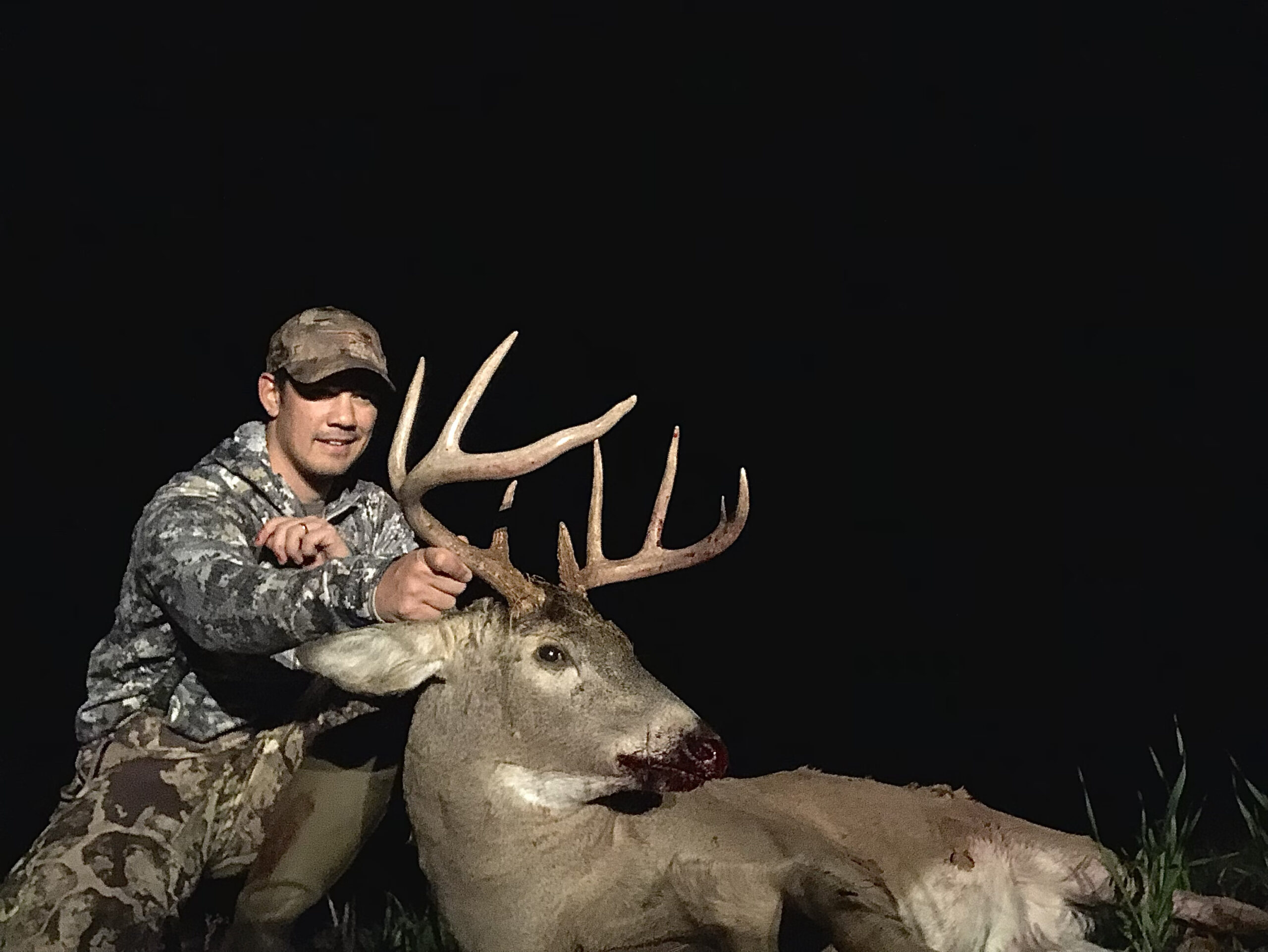
Wisconsin
Species: Whitetail
Estimated population: No estimate
Fall 2021-22 harvest: 309,392
Overall outlook: “Nothing occurred during the previous hunting season or winter that would suggest changes in expectations for the 2022 deer season,” said Jeff Pritzl, deer program specialist for the Wisconsin Department of Natural Resources. “So a continuation of the buck harvest coming in near 150,000 and total harvest somewhere over 300,000 can be expected.”
Read Next: Wisconsin’s Deer Season Decline: When Hunting Tradition Threatens Hunting’s Future
Where to Hunt Deer in Wisconsin
“The Central Wisconsin farmlands continue to produce the highest buck harvest densities in the state and offer many different public-land experiences based on property size and habitat characteristics,” Pritzl said. “If abundance of room to roam is higher on the priority list than abundance of deer, the myriad federal, state and county lands across the northern half of the state have plenty of places to explore. The northwestern counties of Chippewa, Burnett and Washburn and northeastern counties Marinette, Oconto, and Florence produced the highest North Woods public-land buck harvests last year.”
“Deer tend to be very unevenly distributed, influenced by changing food sources and hunting pressure,” Pritzl said. “So mobility and determination to keep searching until a pocket of higher deer activity is located is critical.” Find season dates and bag limits here.
Wyoming
Species: Mule deer and whitetail deer
Estimated population: 293,900 mule deer, 79,000 whitetails
Fall 2021-22 harvest: 18,944 mule deer, 16,117 whitetails
Overall outlook: Grant Frost, senior wildlife biologist with the Wyoming Game and Fish Department, said mule deer have been experiencing a long-term decline. Whitetails had been increasing but were hit hard in 2021 by EHD and blue-tongue. Hunters can find mature bucks of each species but might need to expend more effort this year to do so.
Where to Hunt in Wyoming
The western half of the state should be looking up for mule deer, with good winter survival the past couple of years, Frost said. About 48 percent of land in the state is federal public land, including Bureau of Land Management and U.S. Forest Service properties. The state owns another 5.6 percent and also operates a walk-in hunting program.
“The eastern half of the state may be problematic for whitetails and mule deer after moderate to severe impacts from EHD and blue-tongue outbreaks, and drought this year,” Frost said. Find season dates and bag limits here.
